Cappadocia is famous for its valleys, cave dwellings, and balloon-filled skies, but the region’s highest point offers one of its simplest and most rewarding experiences: climbing Uçhisar Castle. Located in the small town of Uçhisar, just a short drive or hike from Göreme, the castle dominates the landscape. Its massive rock face, riddled with carved rooms and tunnels, stands above the surrounding valleys like a natural fortress.
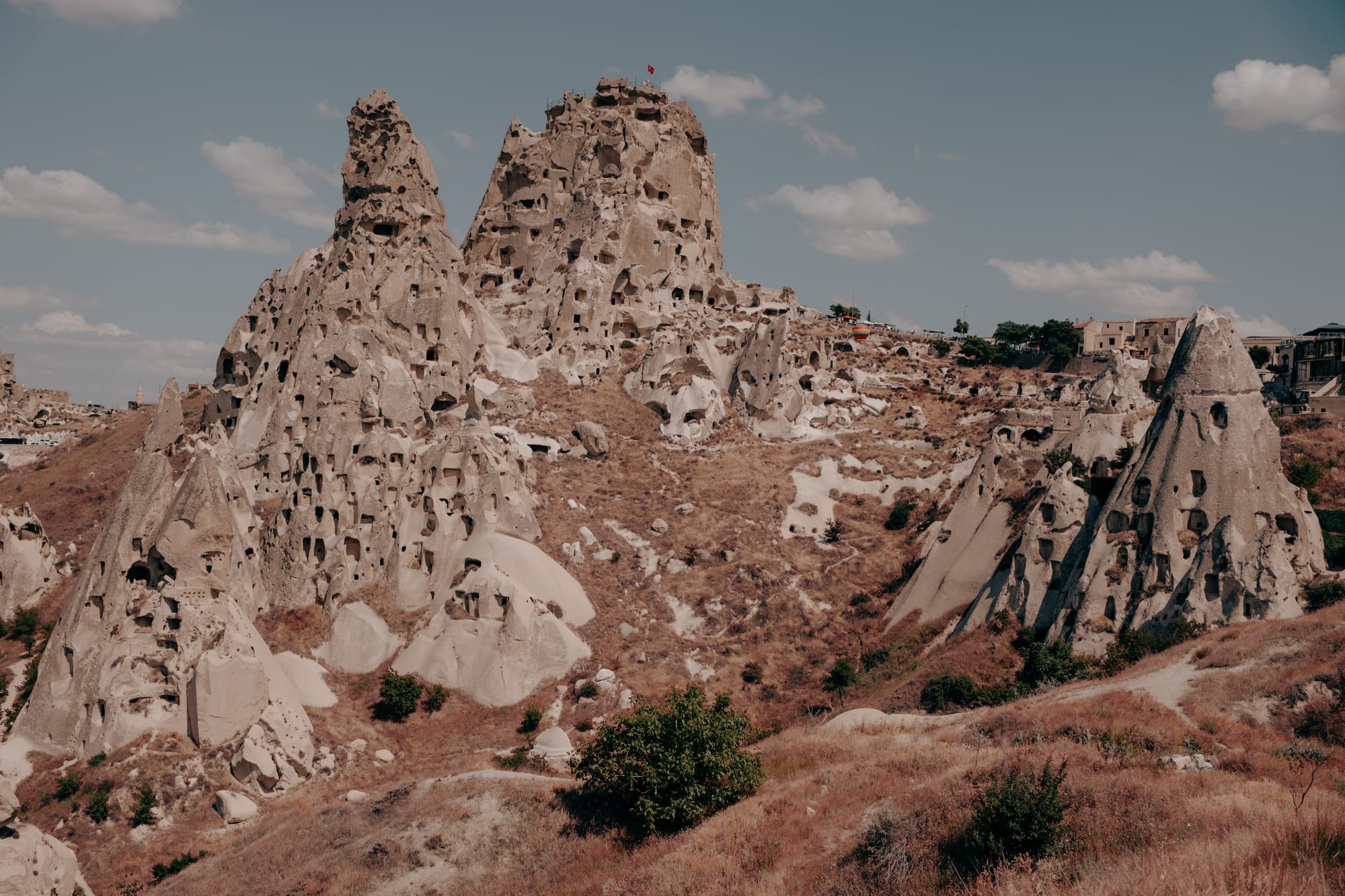
Staying in Uçhisar offers a different perspective from the busier towns of Cappadocia. It is quieter, less commercial, and feels more local. The winding paths around the castle, the views at sunrise and sunset, and the dramatic rock formations all combine to make this area one of the most scenic in Cappadocia. Climbing Uçhisar Castle itself is highly recommended for anyone visiting the region. The fee to enter is modest, the climb is manageable, and the views from the top stretch across nearly the entire region.
History of Uçhisar Castle
Uçhisar Castle is not a castle in the traditional sense, but rather a massive volcanic rock formation that has been carved out over centuries. Its strategic value came from its height—standing at around 1,270 meters, it is the tallest point in Cappadocia. From here, one could see across the valleys and plains, including potential approach routes for enemies.
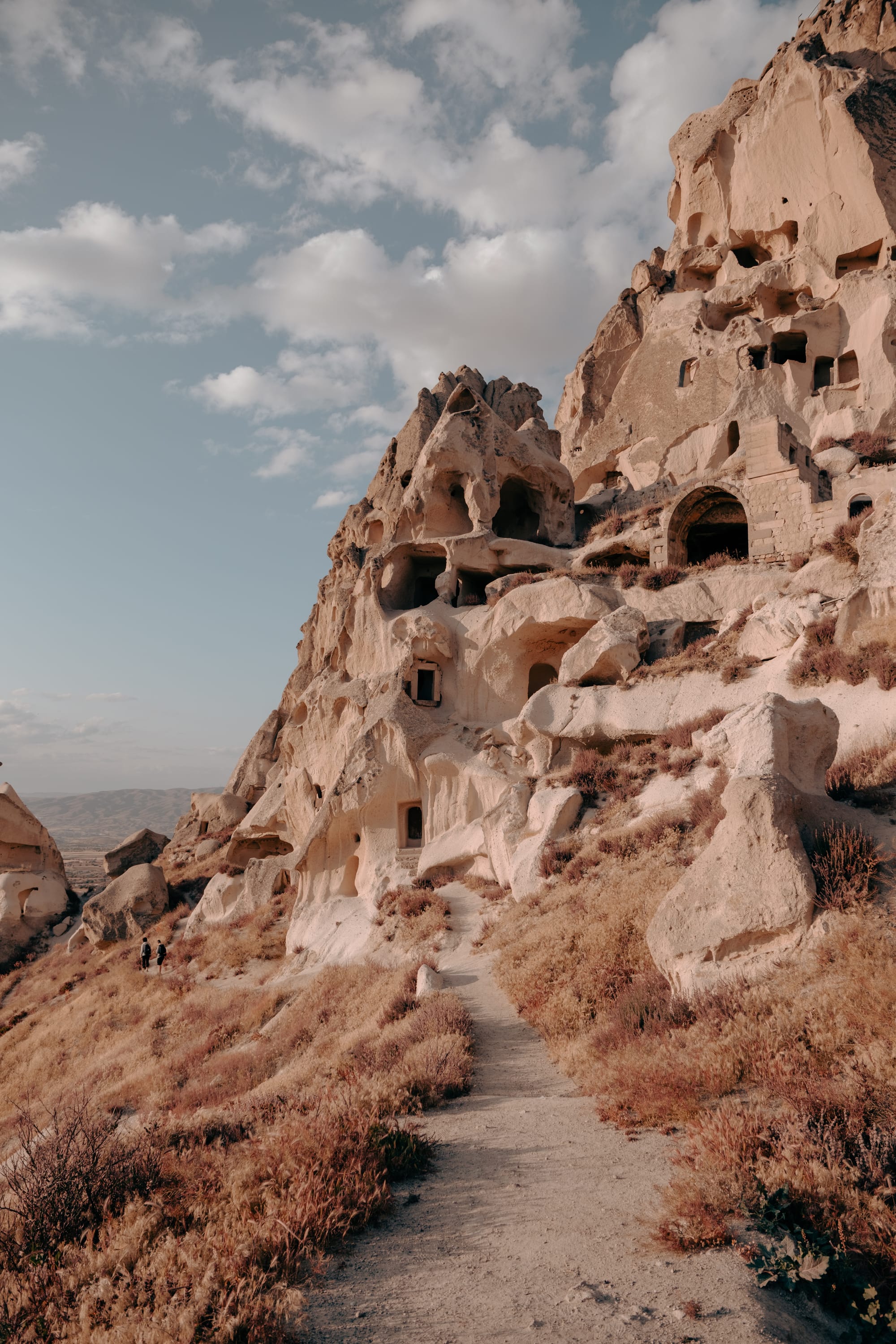
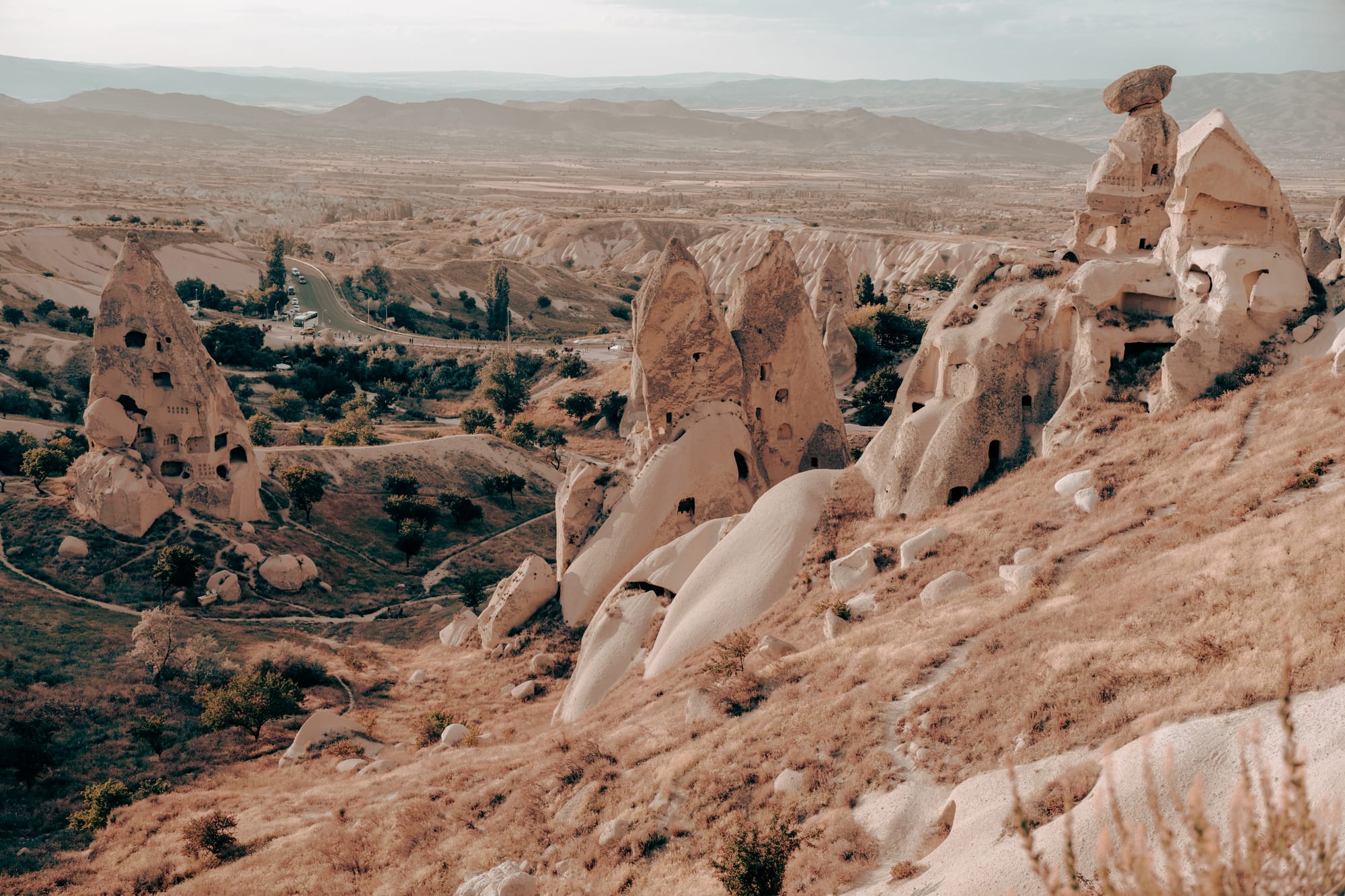
Paths and rock formations around Uçhisar Castle showing the beauty of its surrounding valleys
The earliest use of the castle likely dates back to Roman or Byzantine times, when it was developed as a defensive stronghold. Carved tunnels, lookout points, and rooms provided both protection and shelter. During the Byzantine period especially, Uçhisar was part of a network of fortifications across Cappadocia. When Arab raids swept across Anatolia between the 7th and 11th centuries, local communities used the castle as a refuge. It served as the “outer fortress” of the region, guarding approaches to Nevşehir and Göreme.
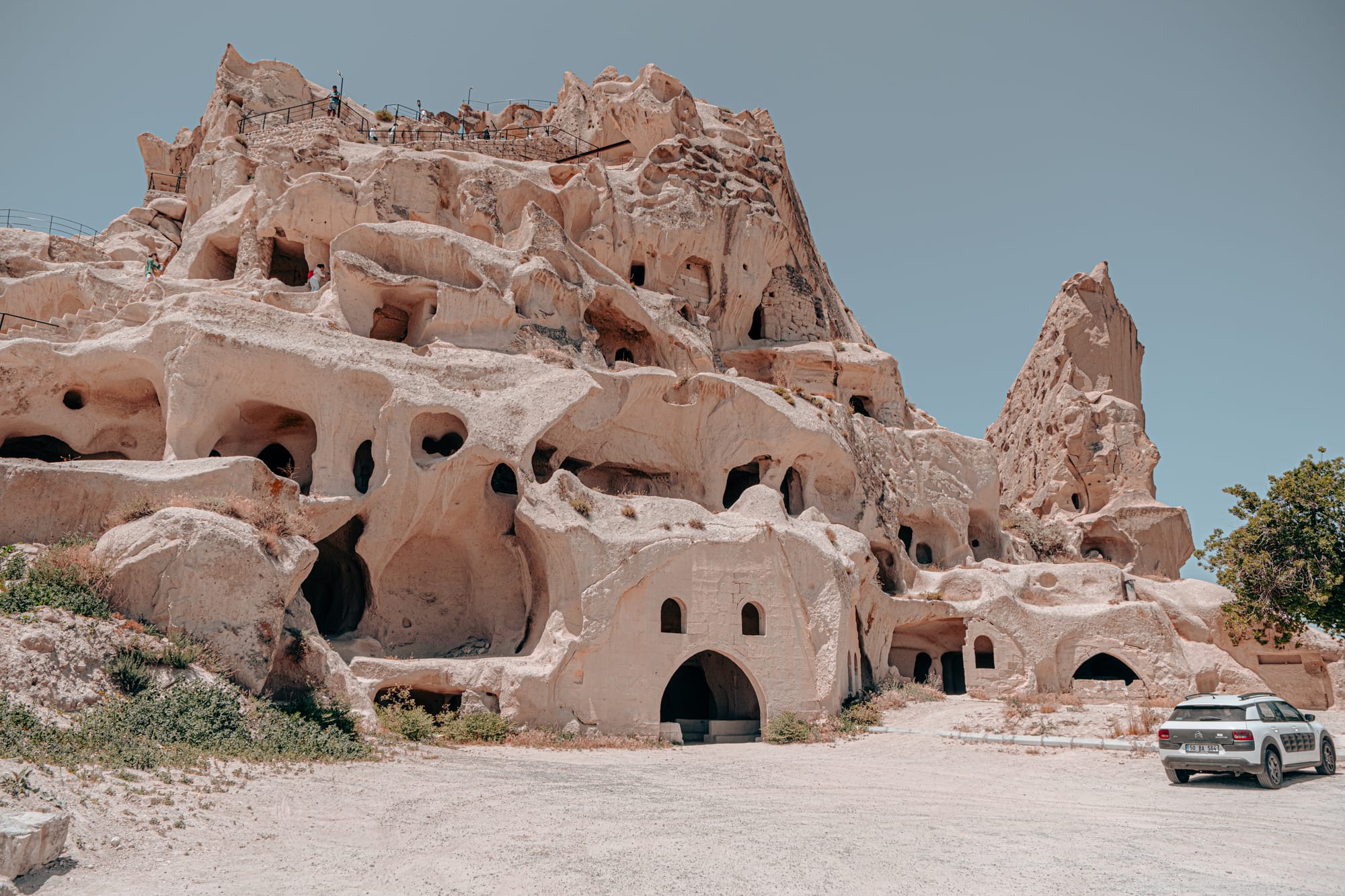
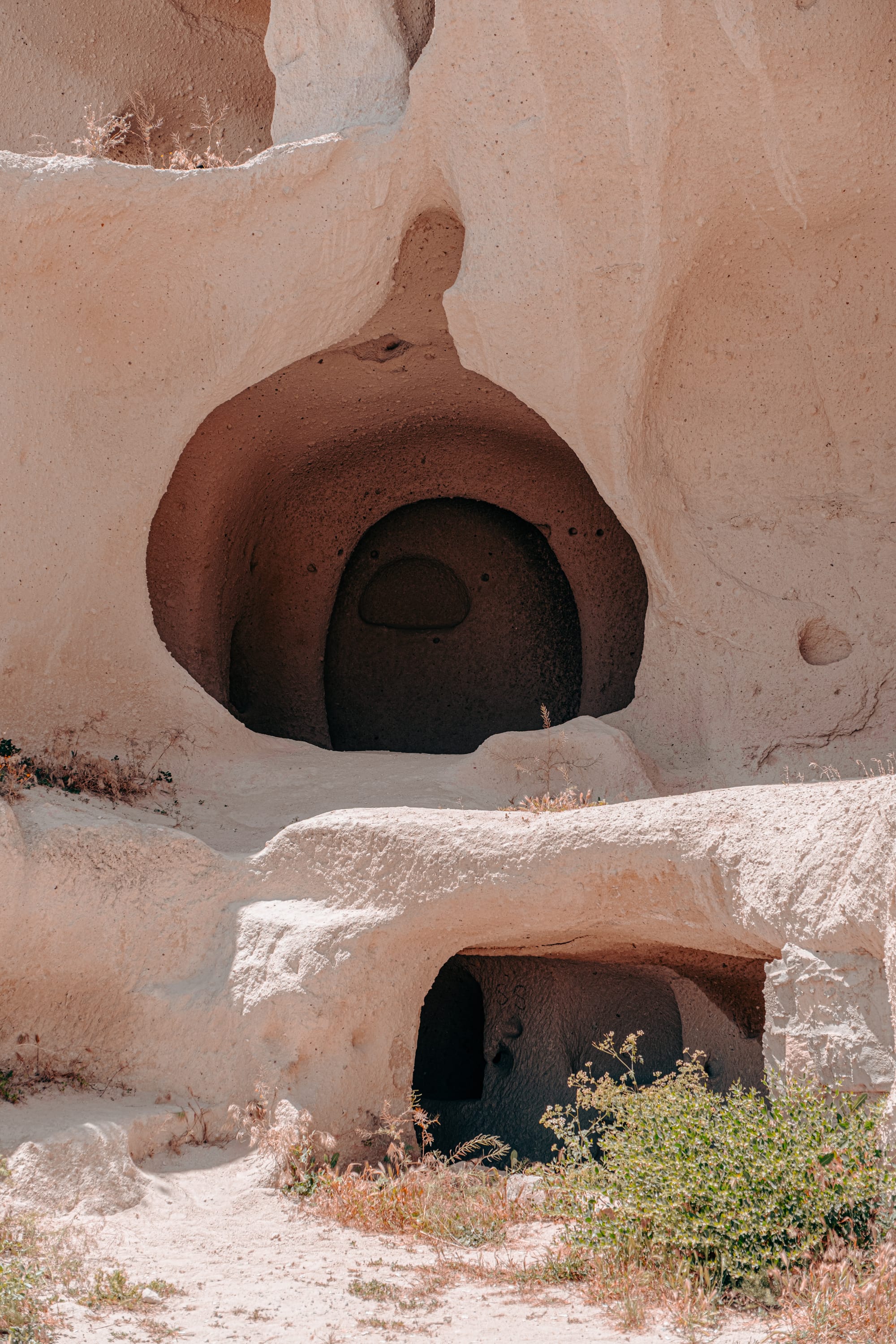
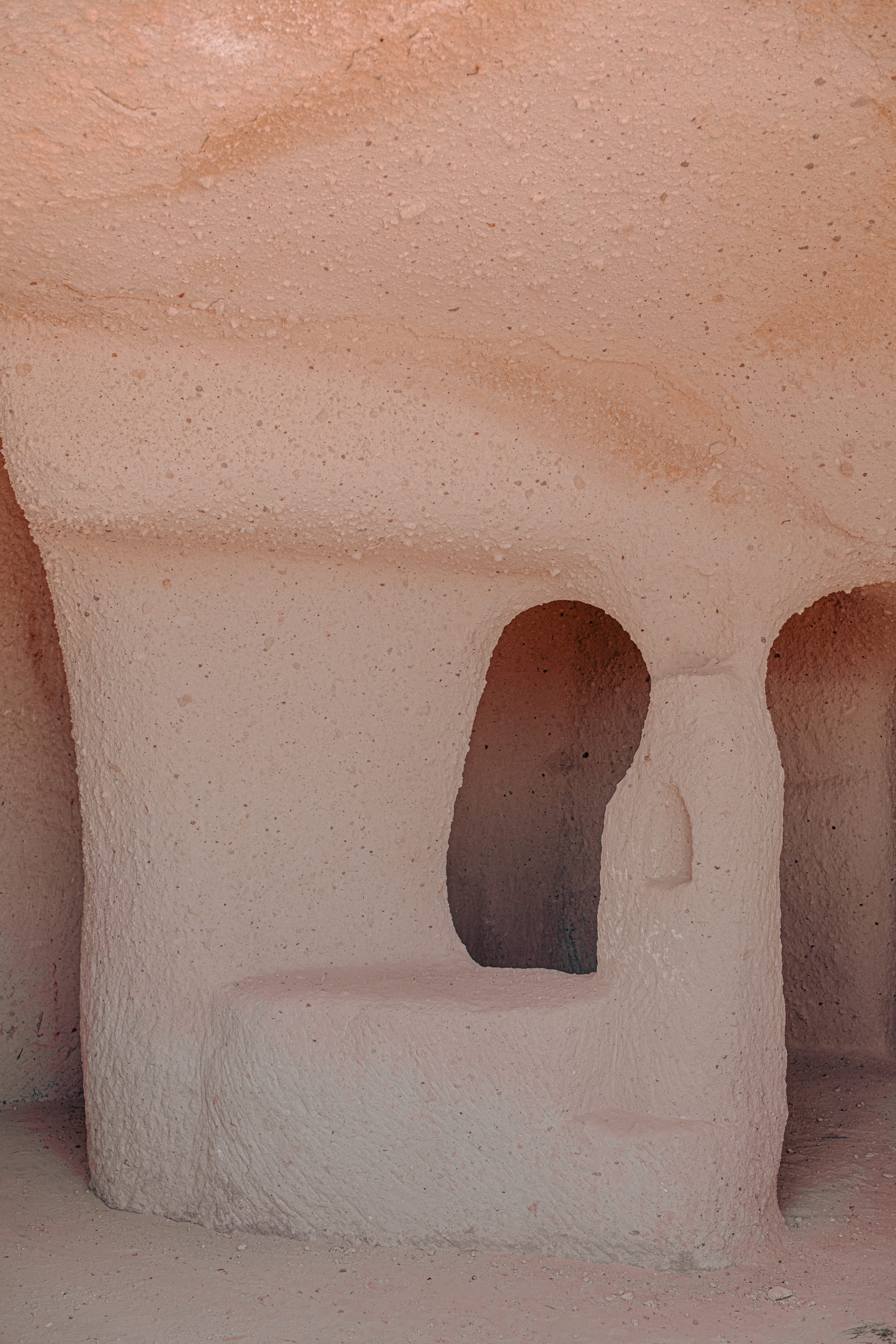
Simple carved chambers inside Uçhisar Castle showing traces of everyday life in stone
Inside the castle complex were stables, cisterns, food storage areas, and homes. At its height, up to 1,000 people may have lived within its carved chambers. The design was practical: tunnels connected different rooms, air shafts provided ventilation, and underground passageways offered safe routes during attacks. There are also remnants of pigeon houses, which were used in Cappadocia for fertilizer and communication.
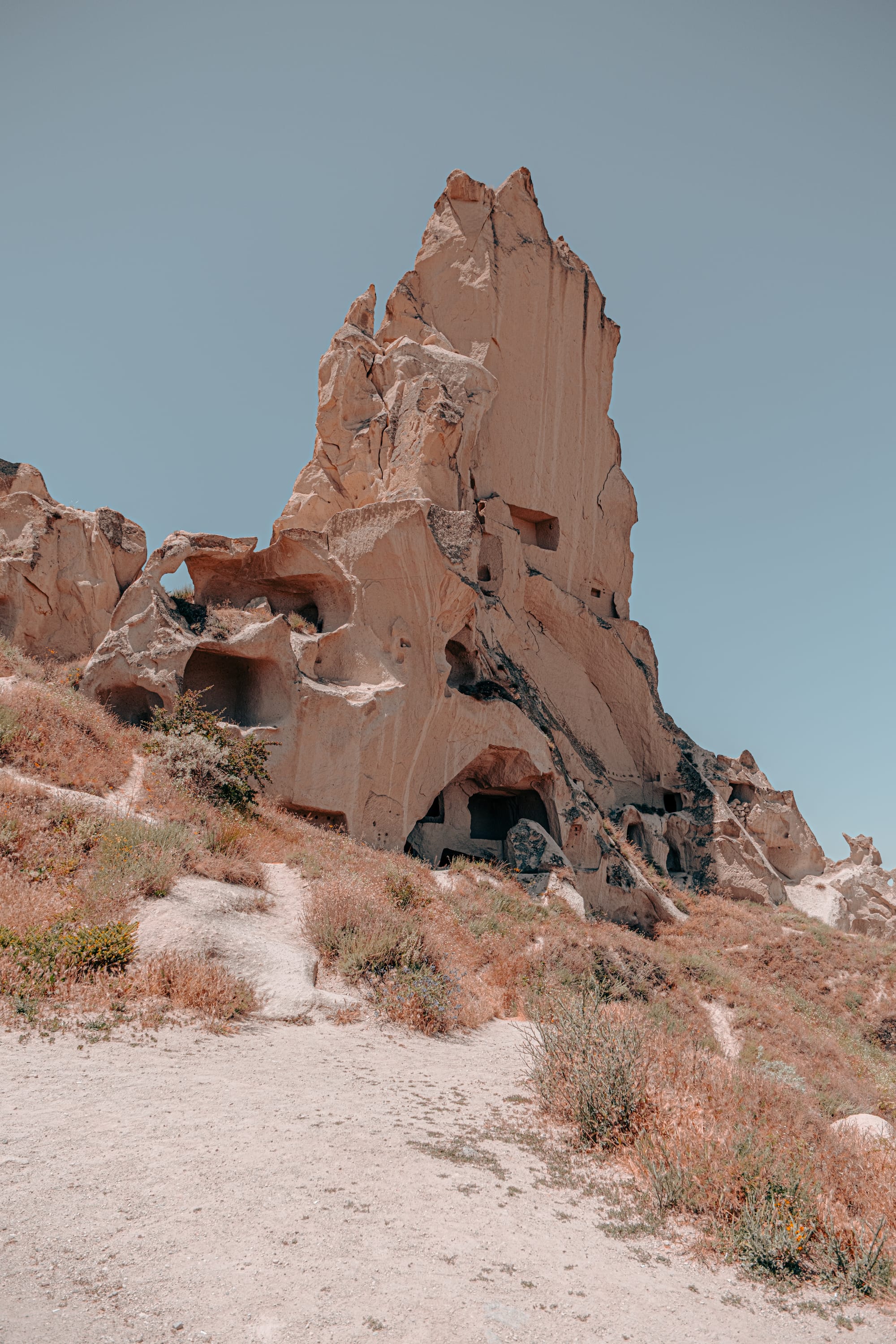
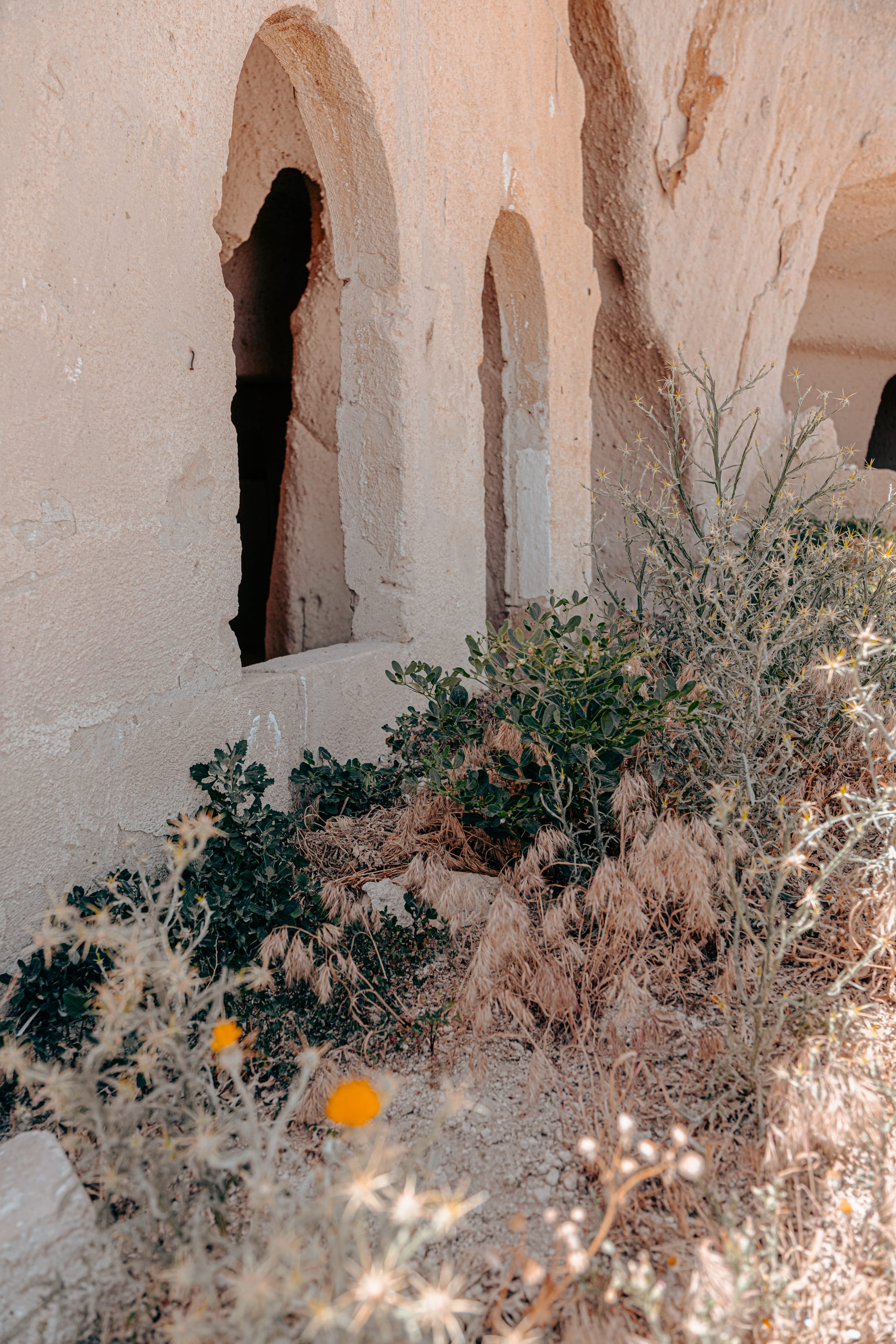
Rock walls and narrow openings reveal the rugged character of Uçhisar Castle
Later, during Seljuk and Ottoman times, the castle continued to be a vantage point and settlement. Over time, erosion and abandonment left many of the rooms unstable, but the overall form of the castle remains intact. Today, it is part of Cappadocia’s protected UNESCO heritage, preserved as both a historical site and a viewing platform.
The setting around Uçhisar Castle
The castle rises directly above the village of Uçhisar, which is built around its base. The view from afar is impressive: a jagged rock rising out of the ground, its surface cut with dozens of windows and openings. Around it, the village is a mix of old stone houses, boutique hotels carved into caves, and winding footpaths that weave between orchards and fields.
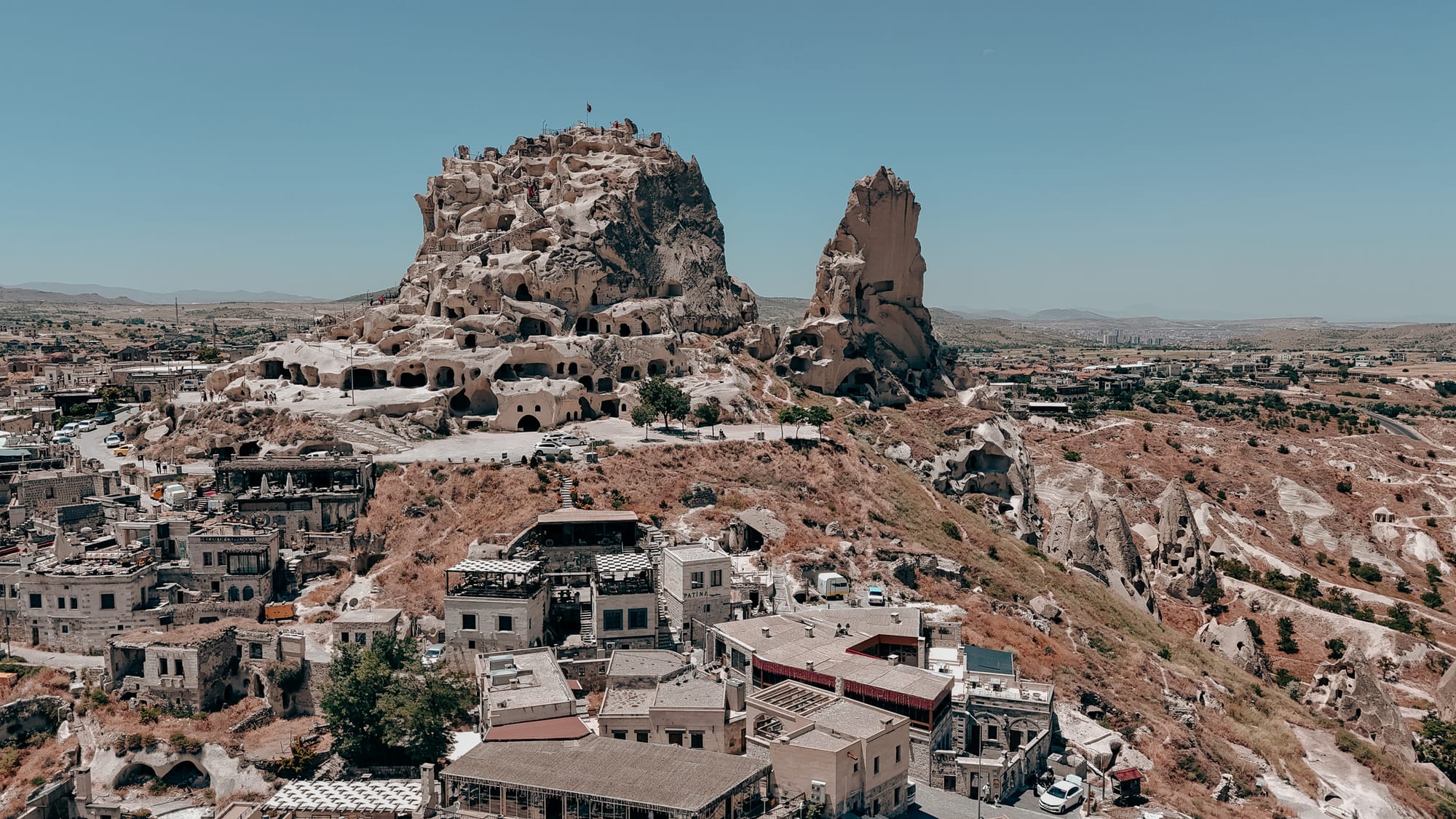
One of the best parts about staying in Uçhisar is how quiet it feels compared to Göreme. In the morning, you can wander the narrow streets leading up to the castle without many people around. The paths are dusty and uneven, framed by low stone walls and occasional carved dwellings. Horses sometimes graze nearby, and the open plains beyond stretch toward the mountains.
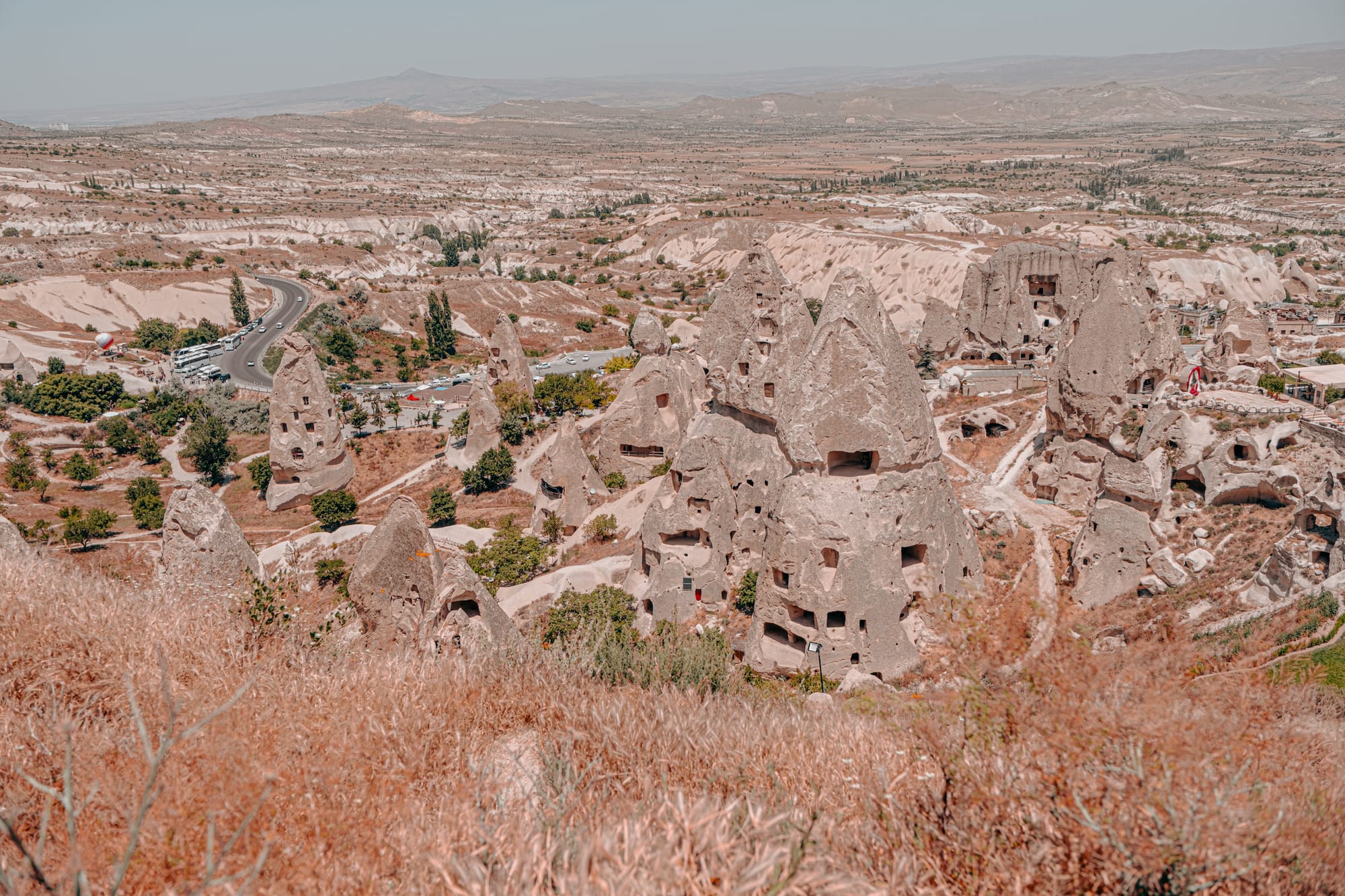
At sunset, the area around the castle becomes a natural gathering point. Locals and visitors alike find spots along the paths and ridges to watch the sky turn orange and pink. The castle glows in the low light, and the valleys below—Pigeon Valley, Love Valley, and beyond—take on even more dramatic colors.
The castle is also one of the best sunrise spots in Cappadocia. From the surrounding ridges, you can see dozens of balloons rising into the sky while the valleys are bathed in soft morning light. Check out our full sunrise post for more details.

The combination of balloons, fairy chimneys, and the silhouette of the castle itself makes it one of the most photogenic areas in the region.
Approaching the castle
From the village, you approach the castle along winding lanes and gradually rising ground. Up close, the structure looks less like a man-made fortress and more like a giant chunk of rock pierced with holes. The “castle” effect comes not from walls or towers, but from the sheer scale of the rock and the honeycomb of carved openings.
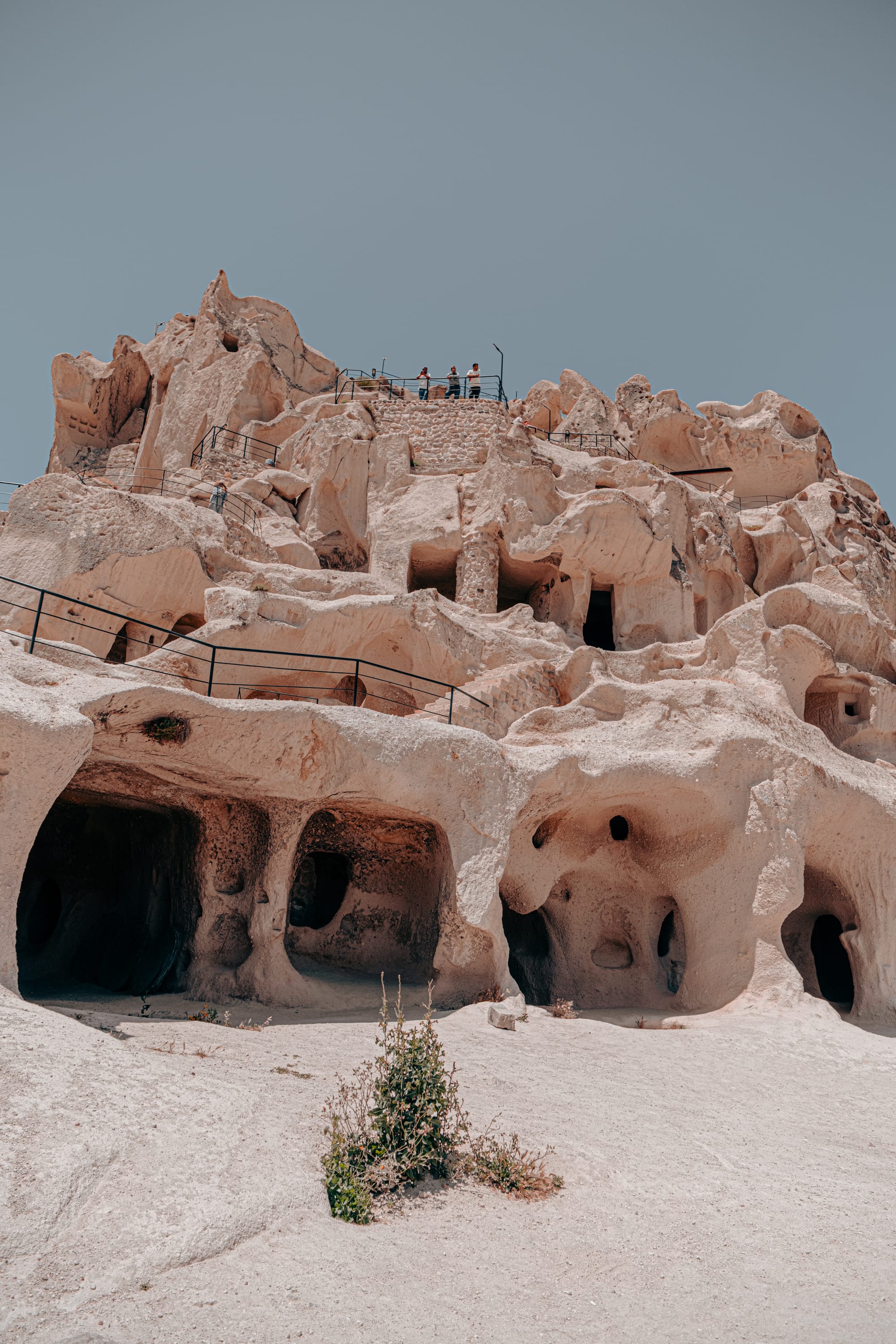
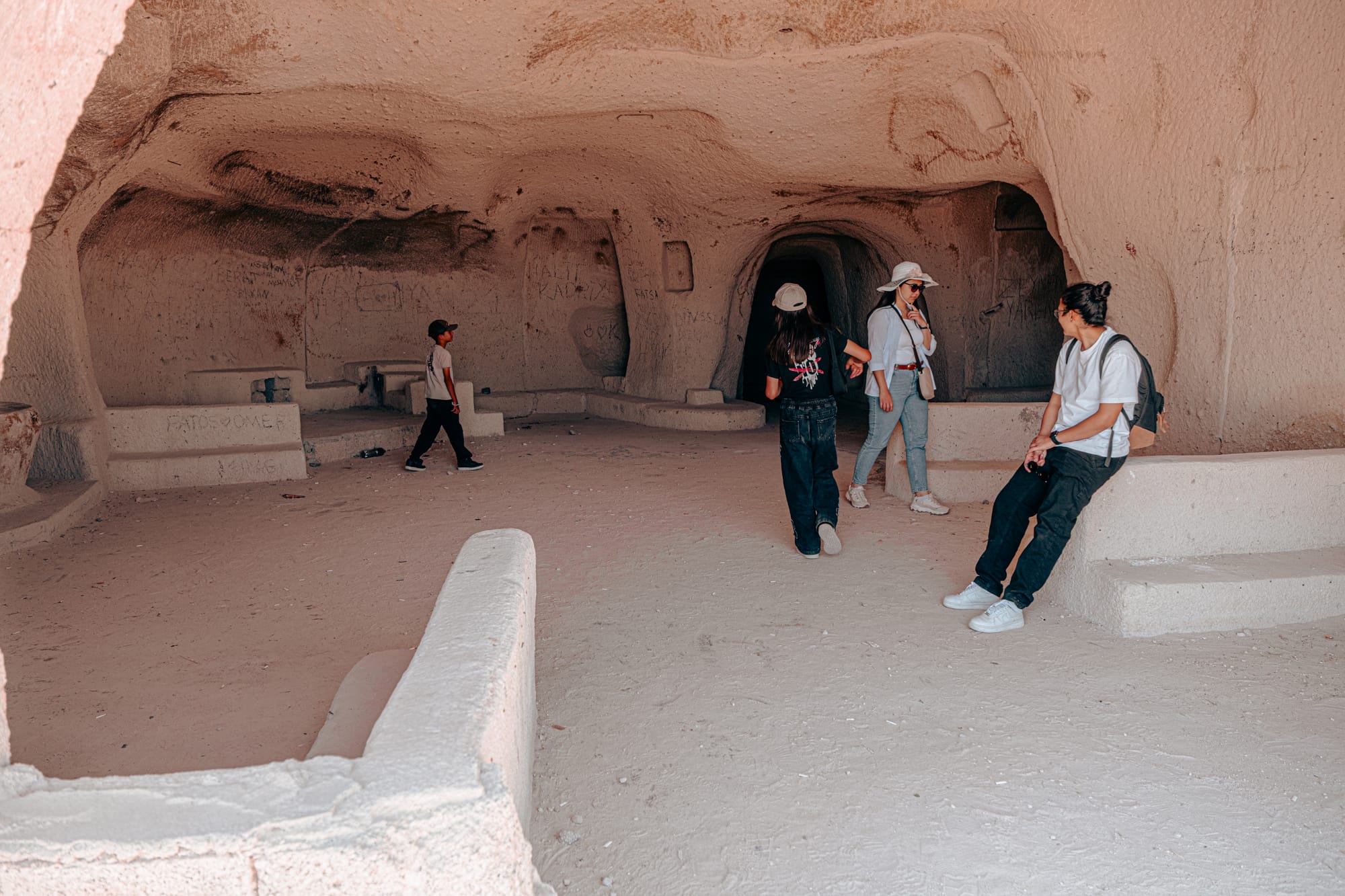
Exploring the carved chambers and viewpoints inside Uçhisar Castle
The base area includes small shops, cafes, and ticket booths. The entrance fee is modest, and tickets are required to climb up into the castle itself. The climb is not especially difficult, but it is steep in parts, with uneven carved stairs and some narrow passages. Good shoes help, and in summer it is best to climb in the morning or late afternoon when the sun is less intense.
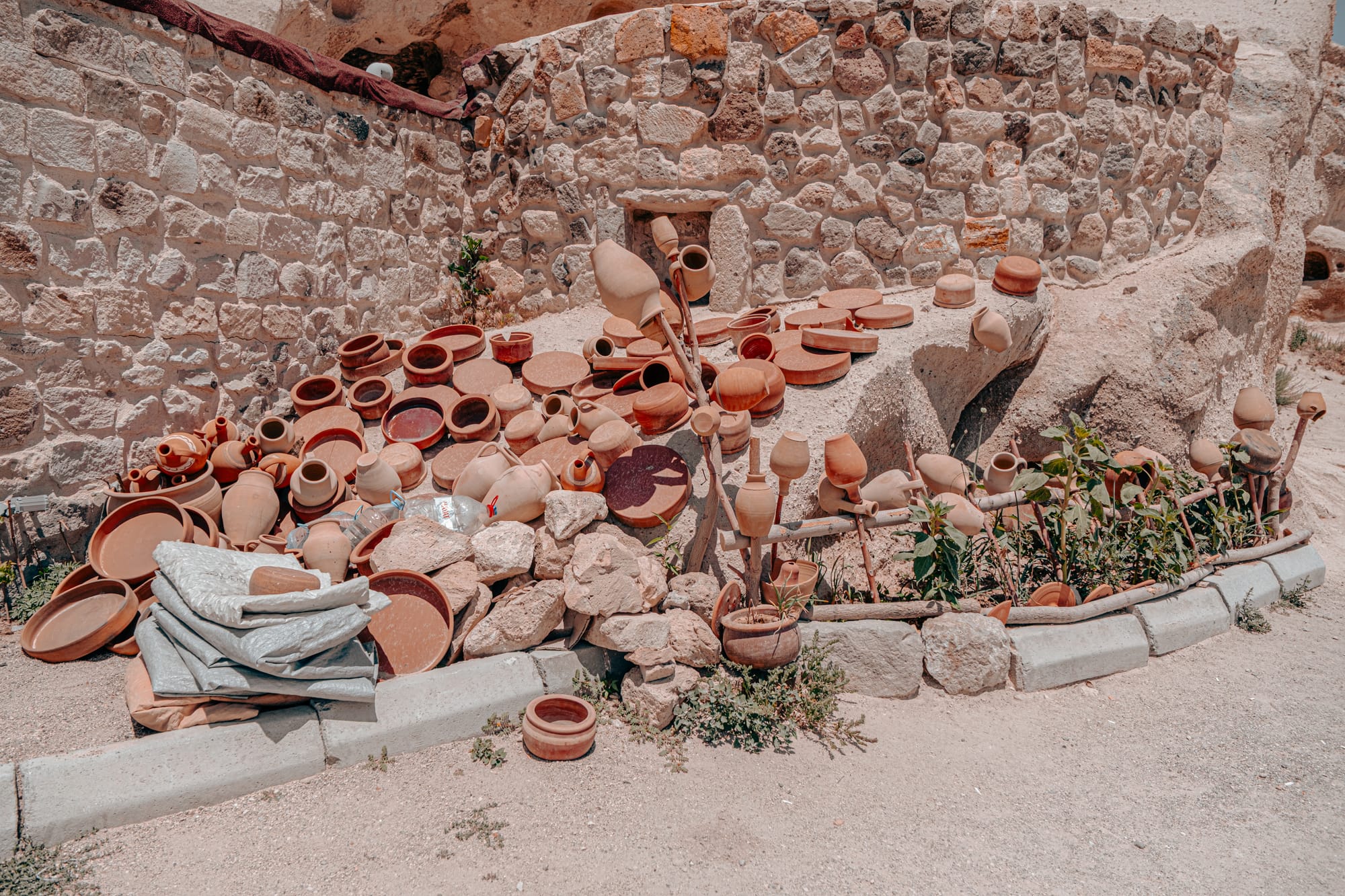
From the outside, you can already see how the rock has been hollowed out into chambers. Some are connected, some collapsed, and others now blocked. It is immediately clear that this was a lived-in structure—not a palace, but a community space designed for survival.
Exploring inside the castle
Once inside, the carved architecture becomes more apparent. At the lower levels there are larger open rooms, niches cut into the walls, and occasional remains of what look like storage areas or stables. Some areas display artifacts and recreated setups showing how daily life might have been organized.
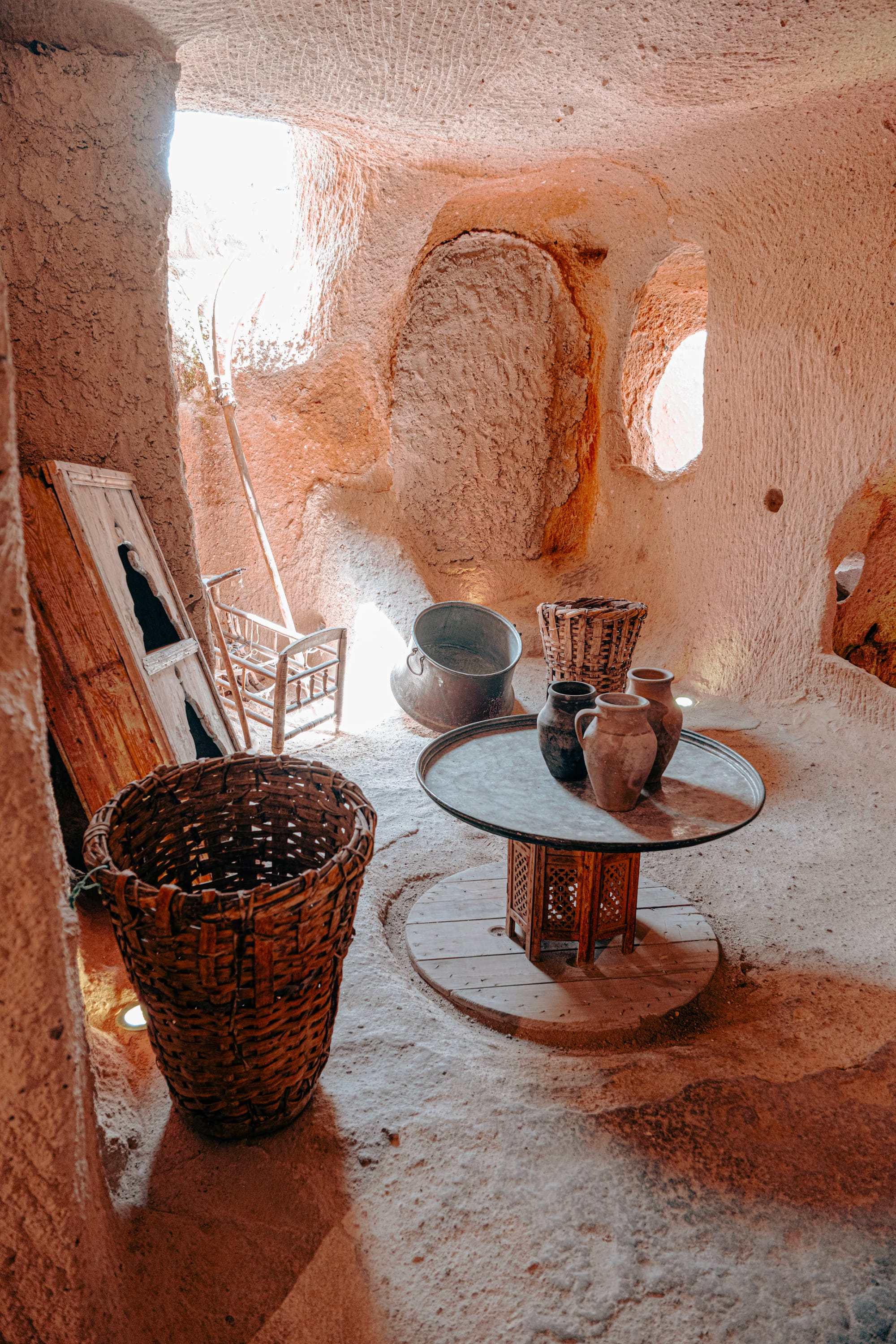
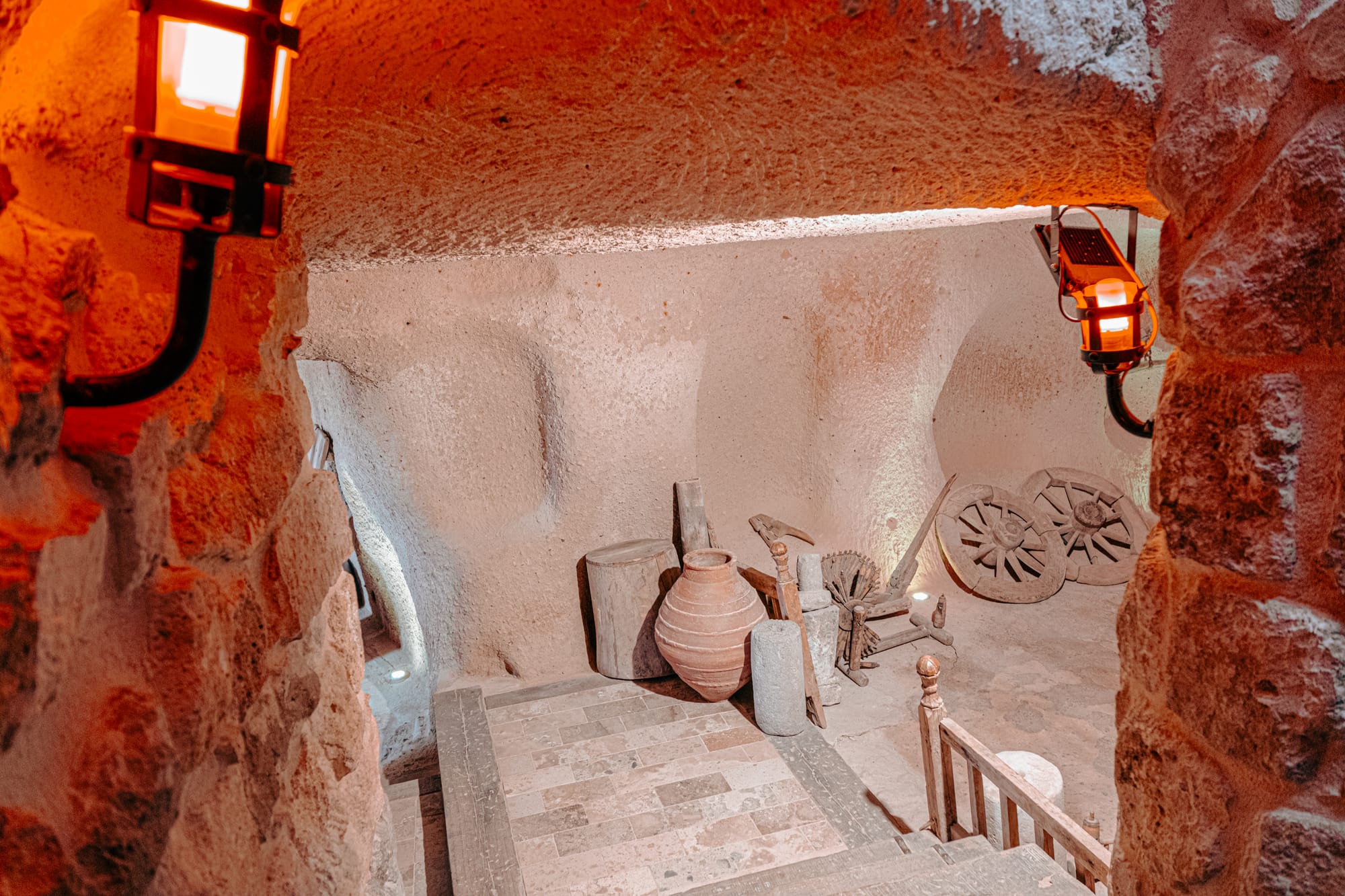
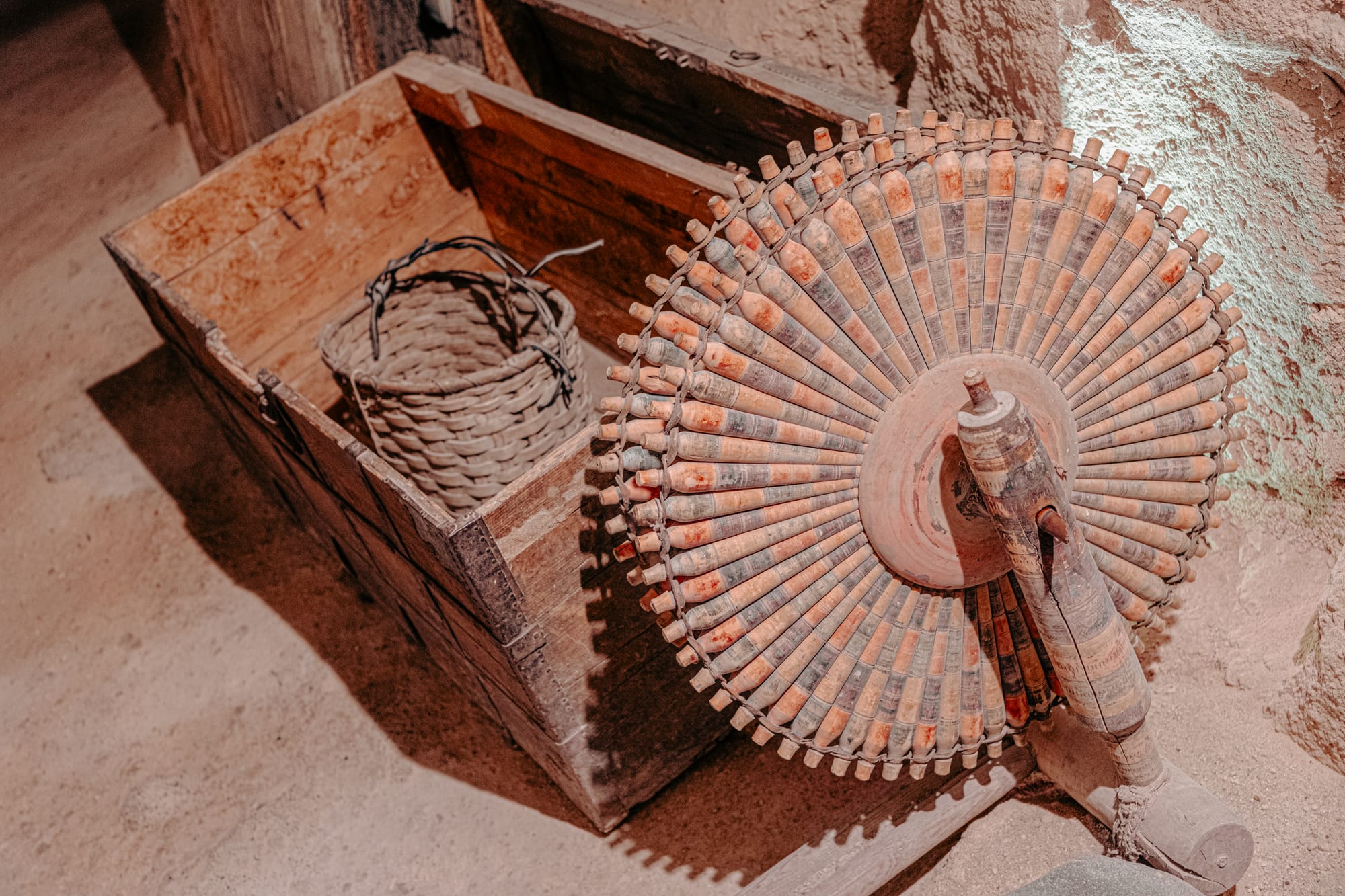
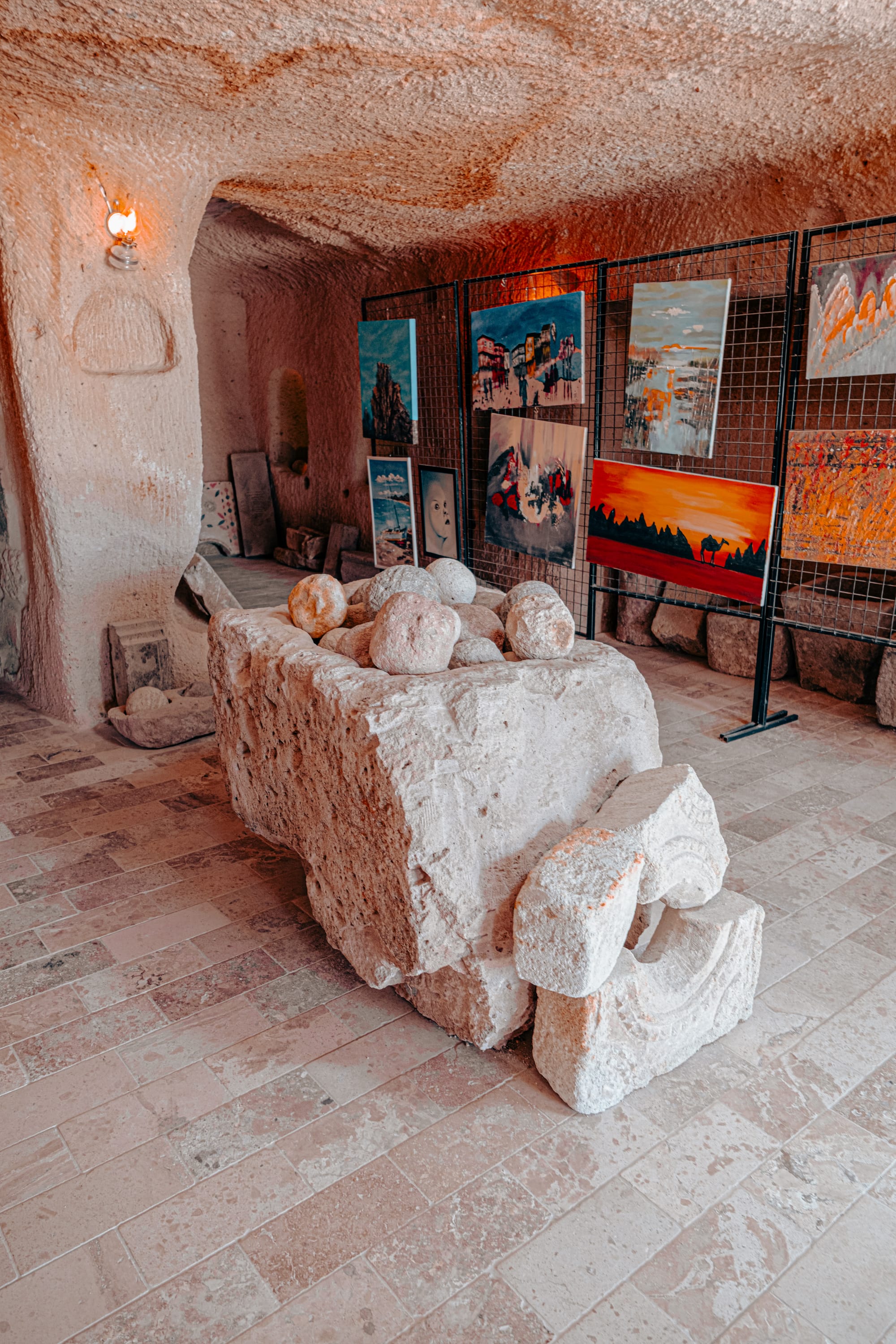
Artifacts and displays inside Uçhisar Castle highlight its history and traditional craftsmanship
The base of the castle contains small displays of old tools, pottery, and household objects. These details give a sense of the practical, everyday functions the castle served. Unlike grand castles in Europe, Uçhisar was about shelter and efficiency.
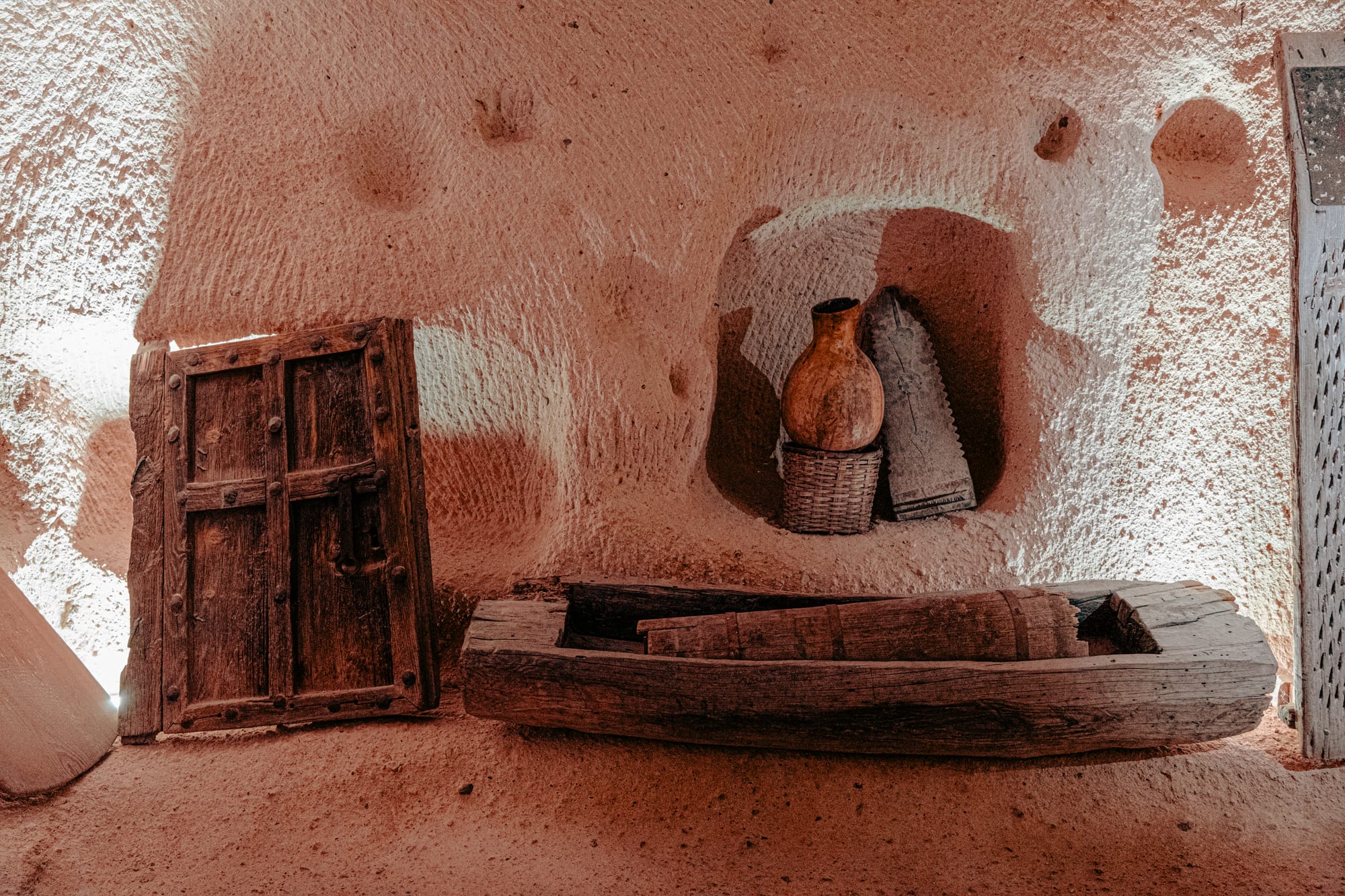
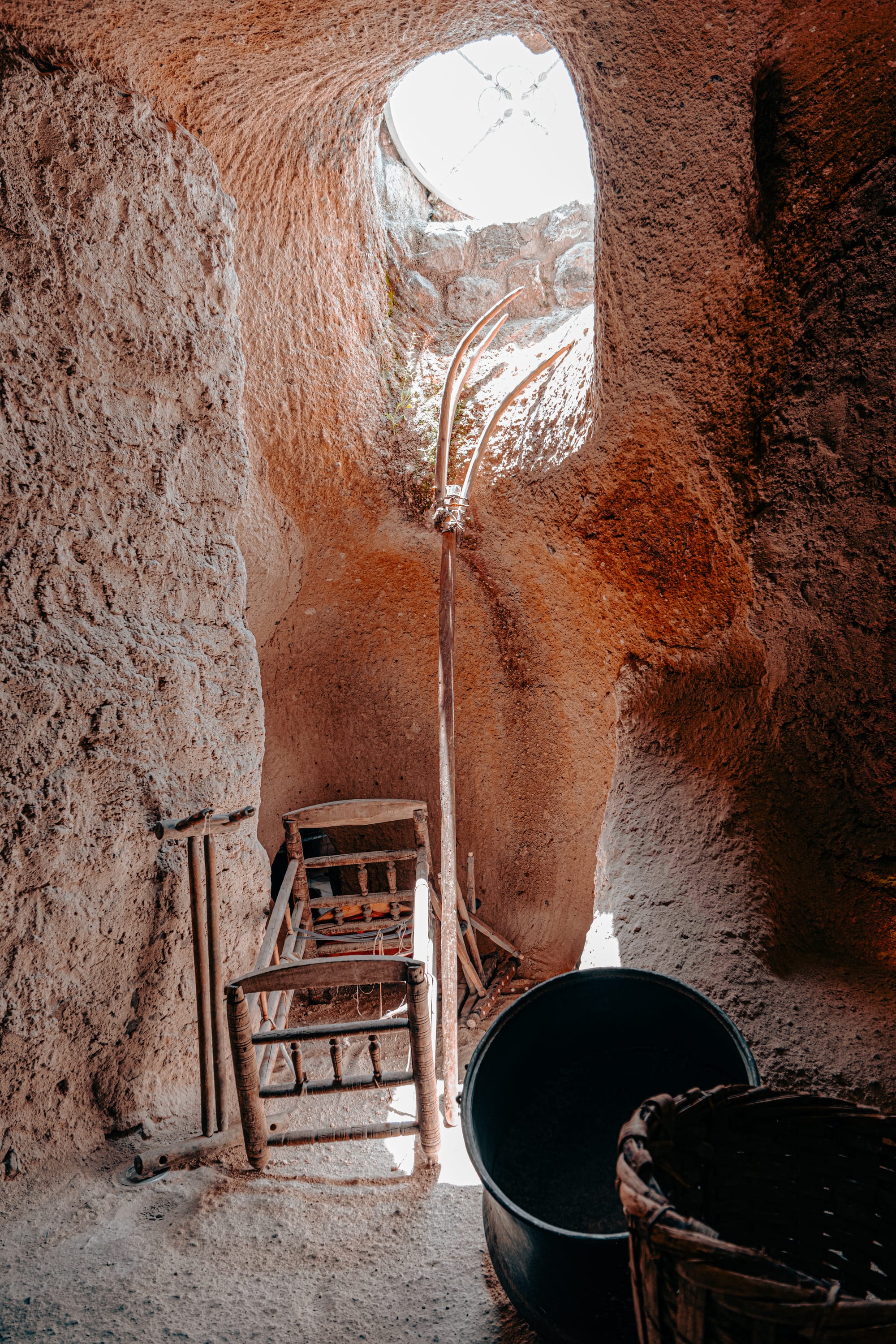
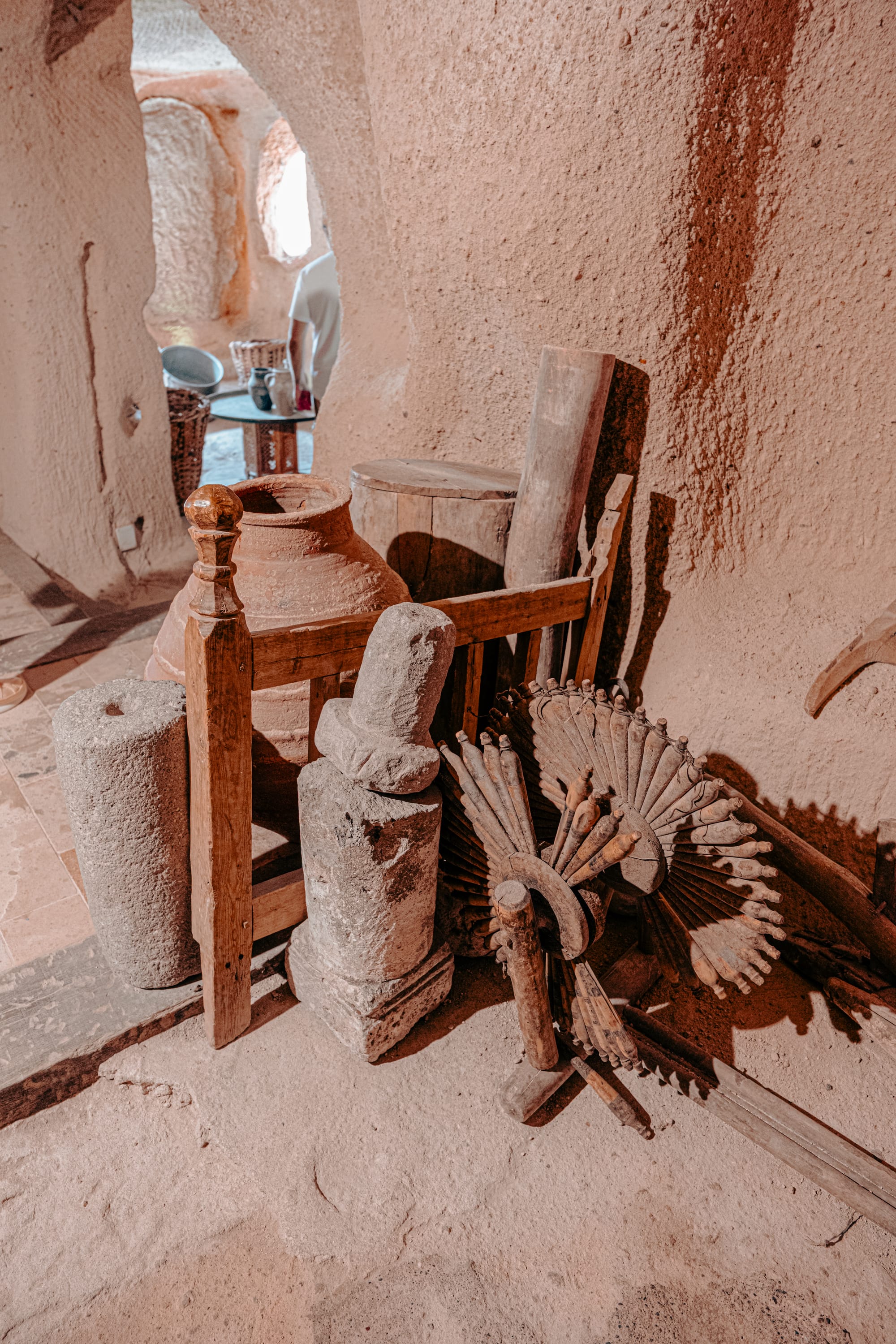
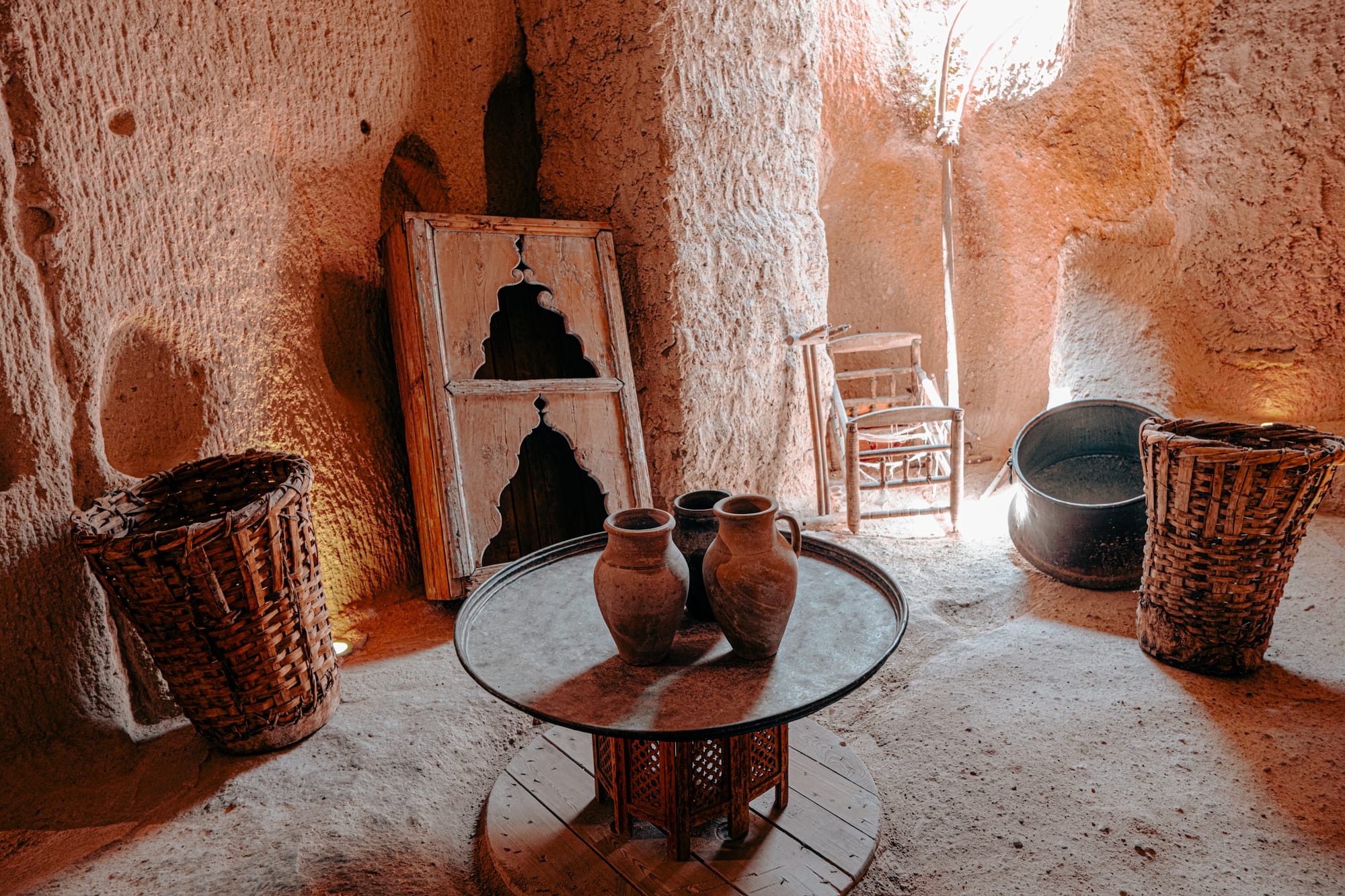
Everyday household items preserved inside Uçhisar Castle caves
As you climb further, narrow tunnels connect different chambers.
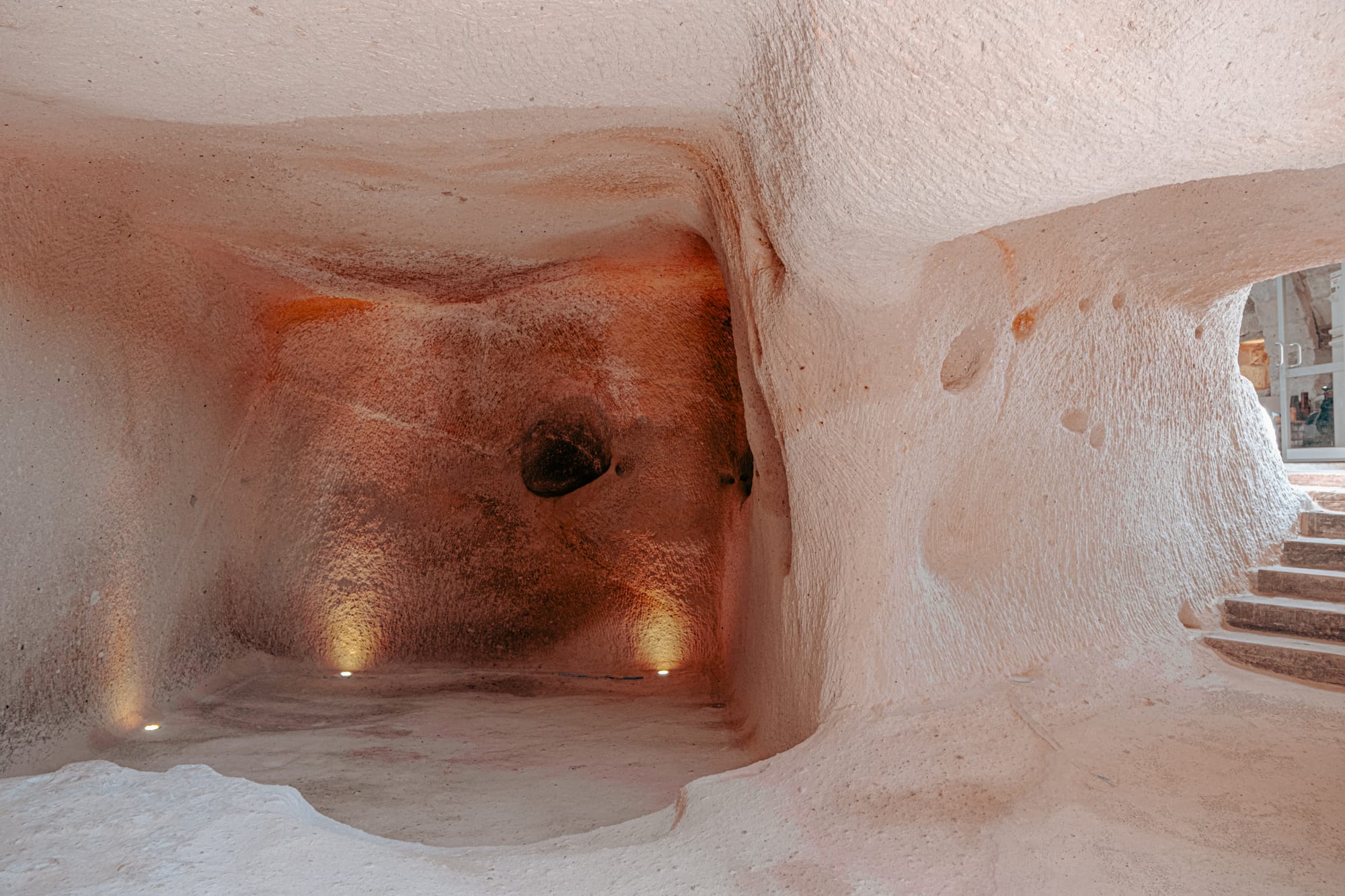
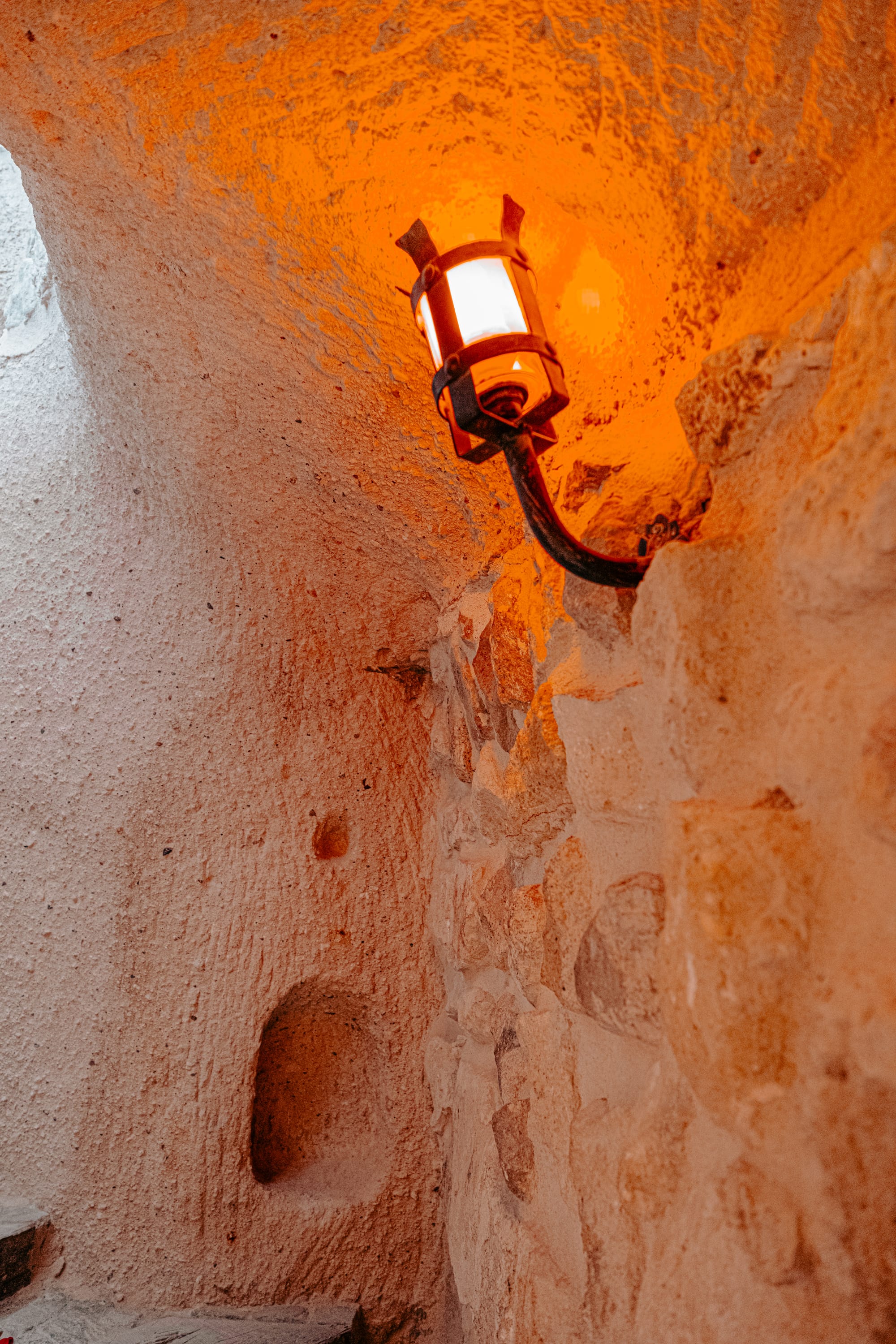
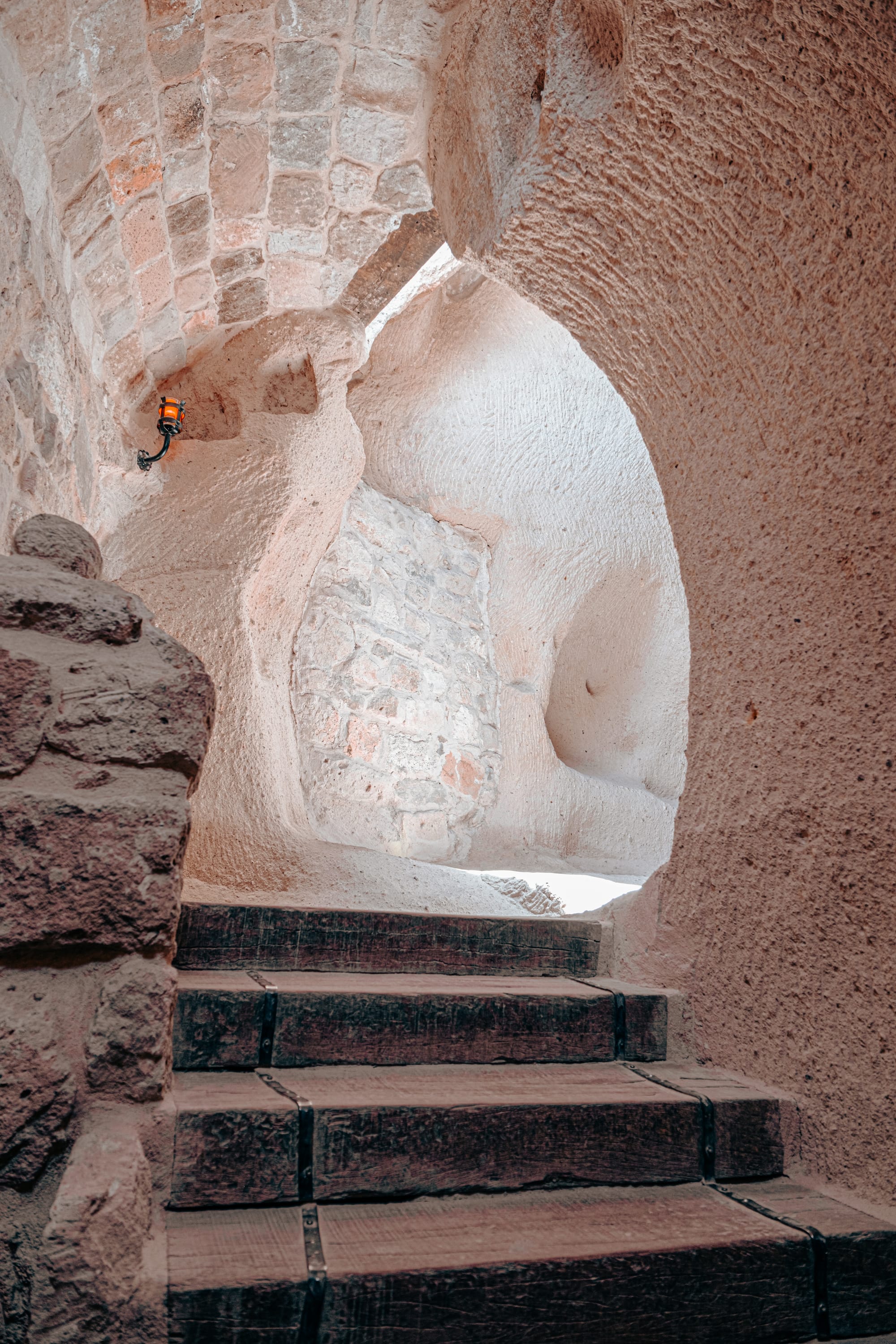
Stone stairways and lanterns add atmosphere to the interior of Uçhisar Castle
Openings in the rock provide glimpses out to the surrounding valleys. Some of these are framed like windows, creating perfect photo opportunities with the landscape beyond.
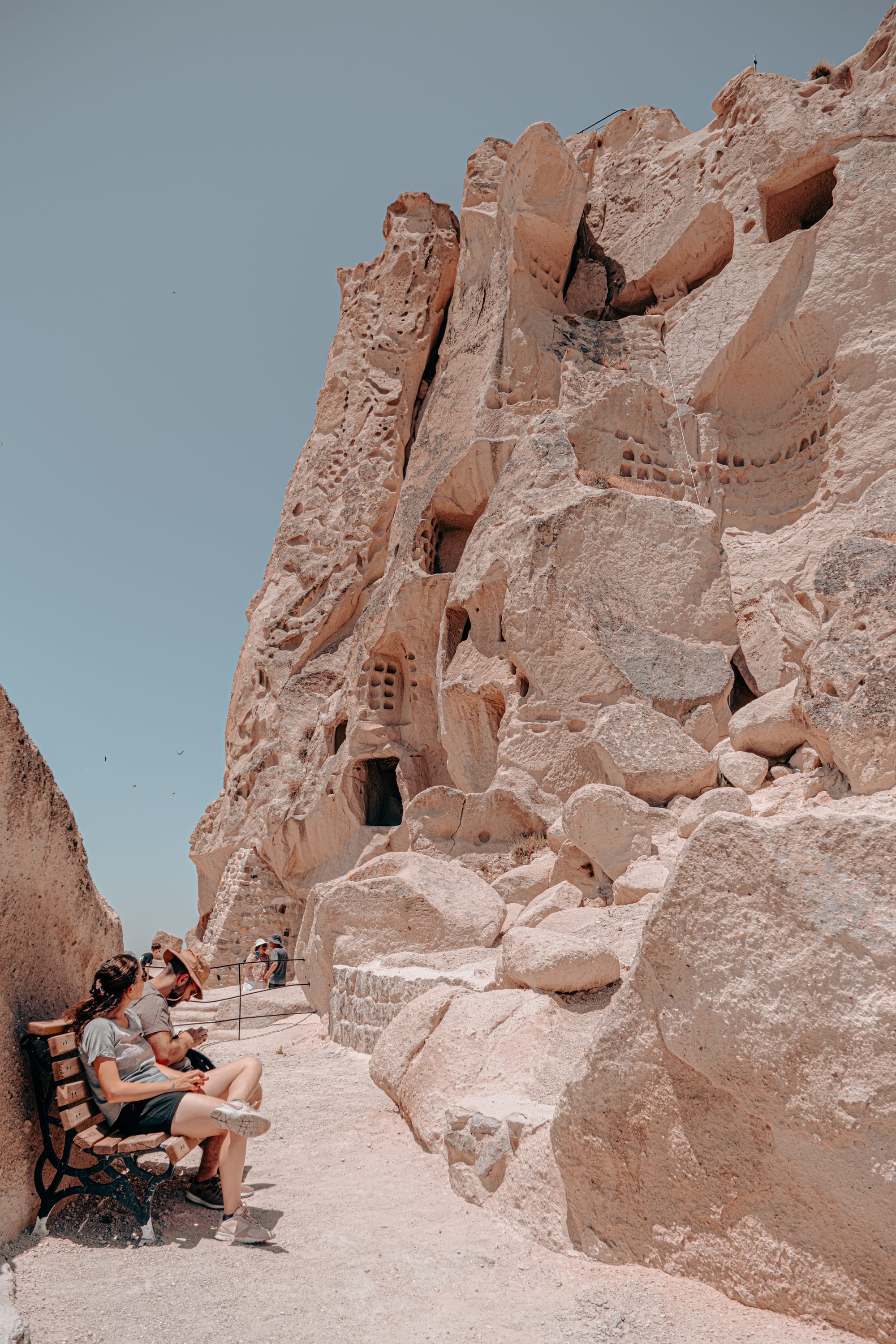
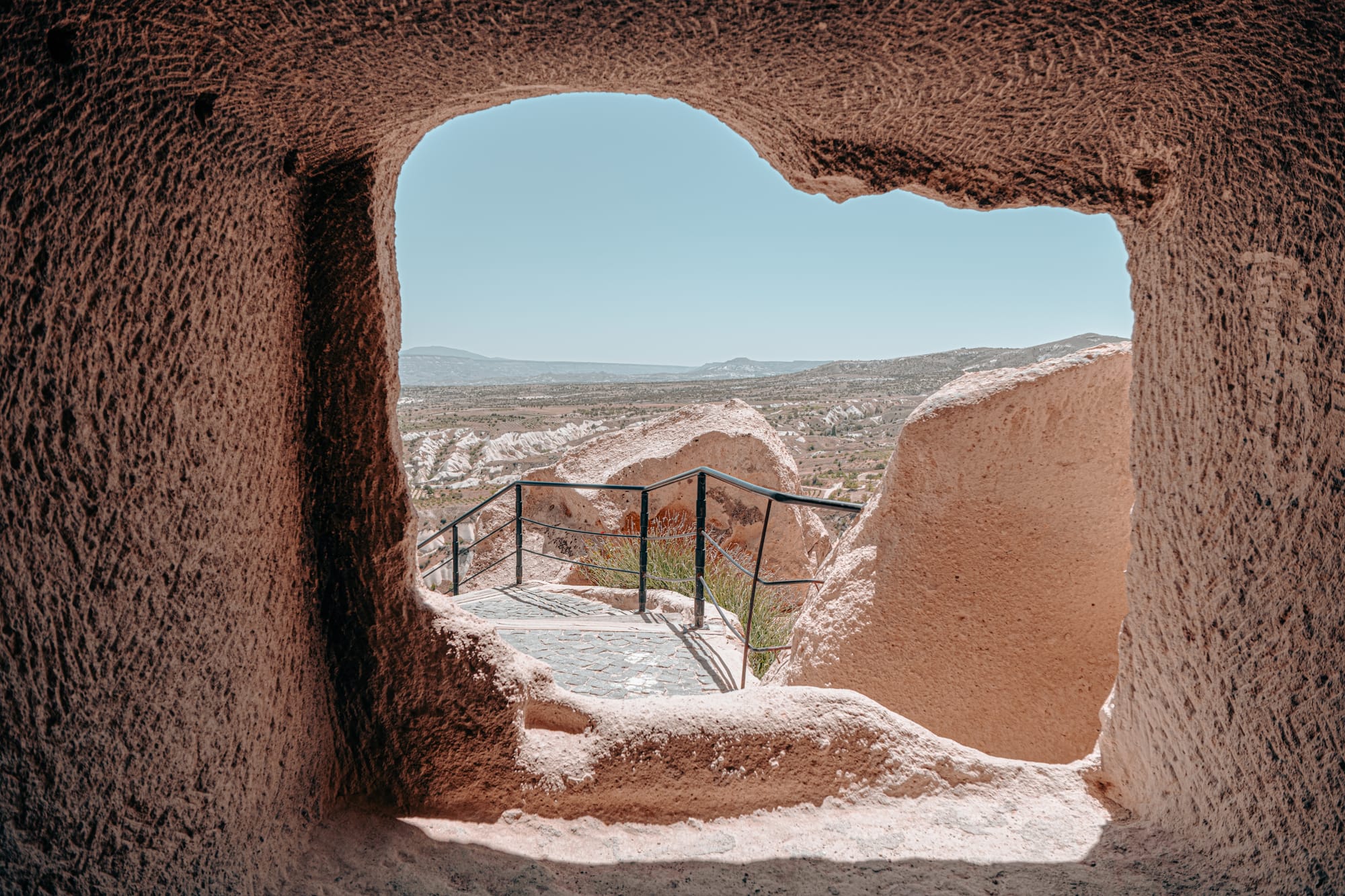
Resting spots and framed viewpoints along the climb up Uçhisar Castle
Light filters in through small cuts in the rock, casting shadows on the walls. The feeling is one of exploration—each turn reveals another carved space or passage leading upward.
Climbing to the top
The climb itself is part of the experience. Along the way, there are multiple terraces and viewpoints that offer excellent views without needing to reach the very top. These mid-level stops are worth taking in. You can see the village directly below, framed by the rugged windows of the castle. You can look across to Pigeon Valley and see the winding trails leading down toward Göreme.
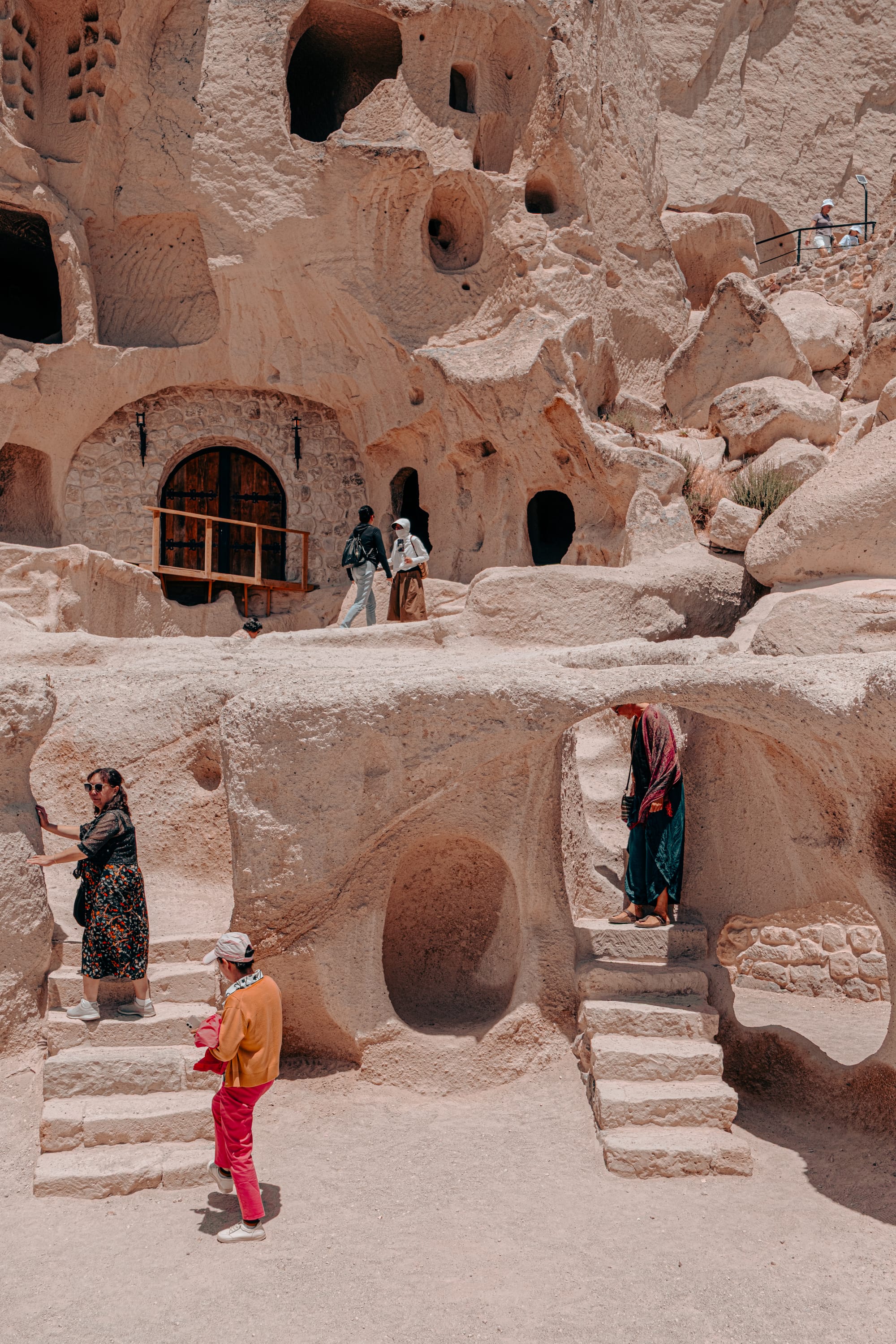
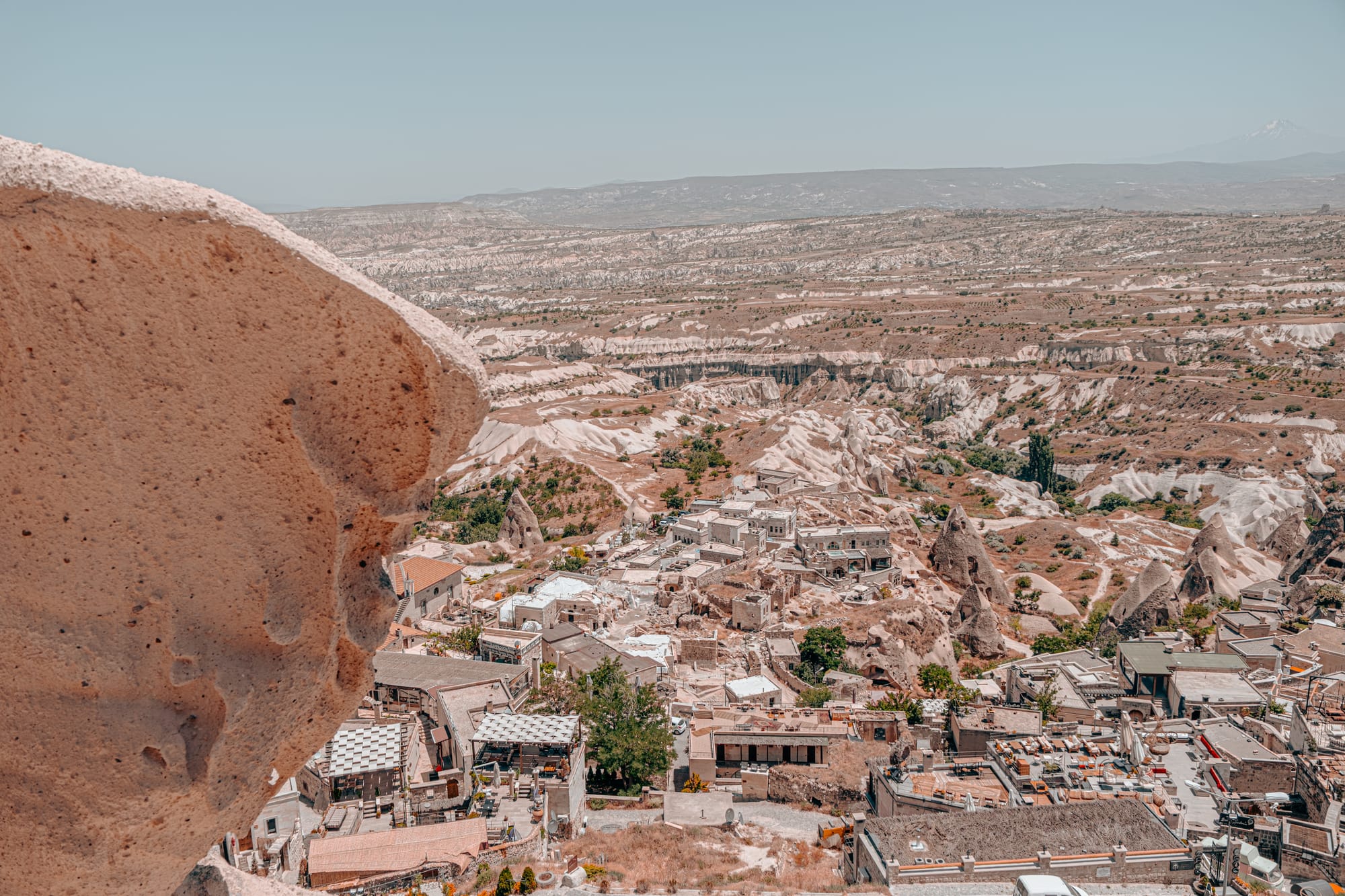
Climbing Uçhisar Castle offers both carved details and sweeping views over Cappadocia
The stairways are narrow in places, carved directly into the rock. Some sections are uneven, with metal railings added for safety. While it is not a strenuous climb, it requires some attention, especially if it is busy.
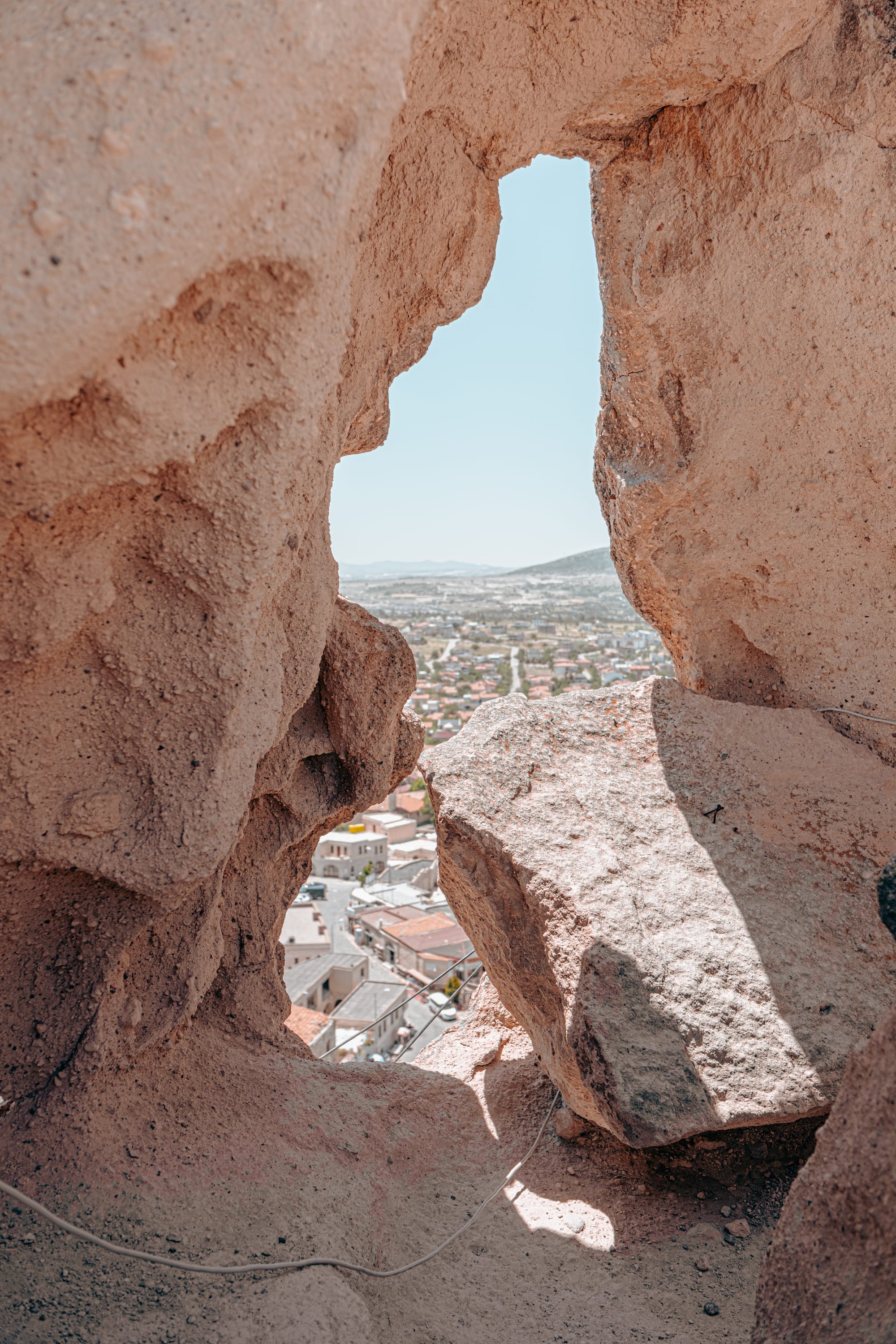
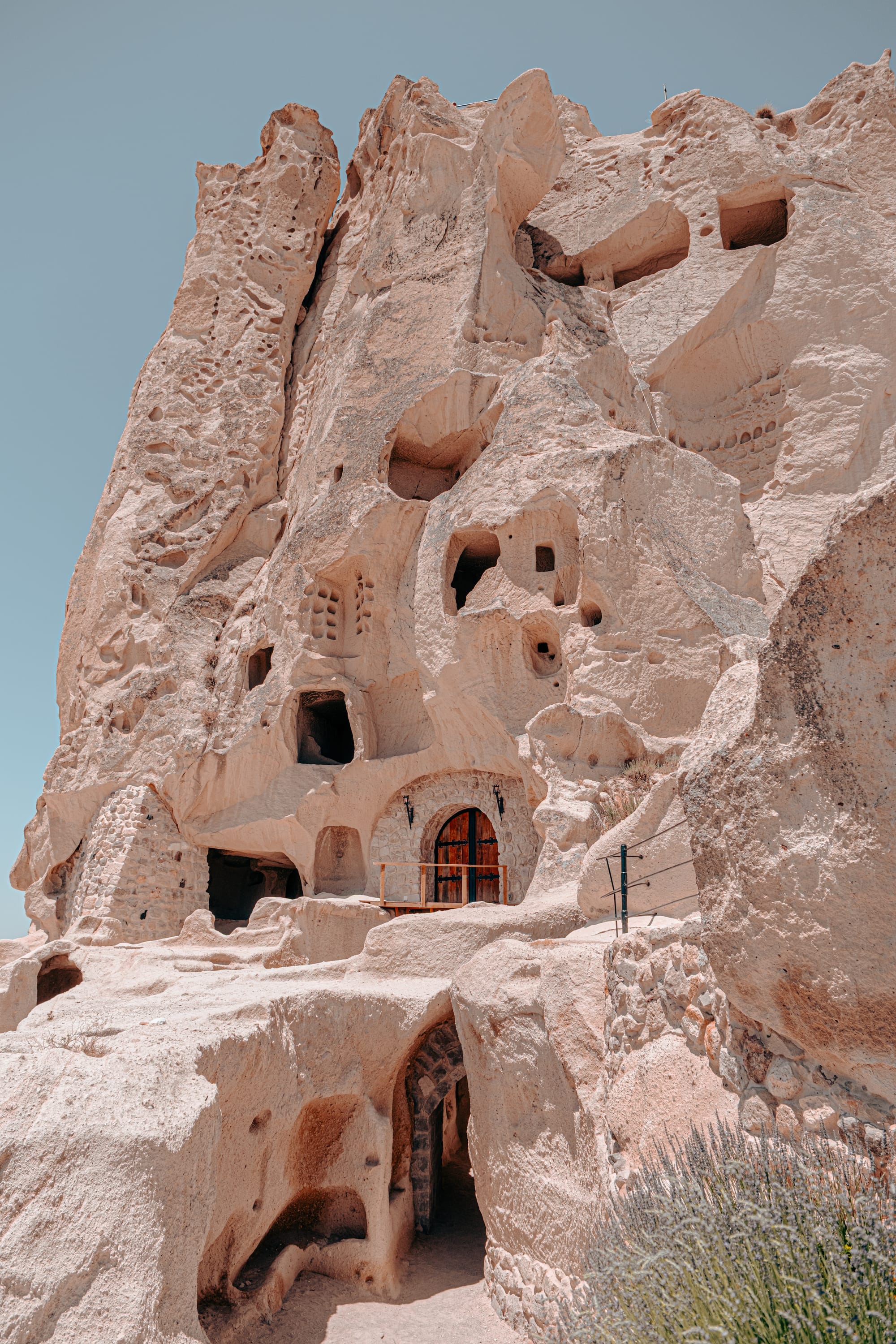
Windows and entrances carved into Uçhisar Castle offer unique views of the town below
One of the highlights is how the castle itself frames the views. Openings cut into the walls serve as natural windows, perfectly positioning the valleys, villages, and ridges beyond. The higher you go, the wider the views become.
The panoramic view from the summit
At the top, the reward is immediate. From the summit of Uçhisar Castle, you get a 360-degree view of Cappadocia. Looking one way, you see the valleys filled with fairy chimneys, stretching toward Göreme. In the other direction, the plains open out, with Mount Erciyes visible in the distance on clear days.
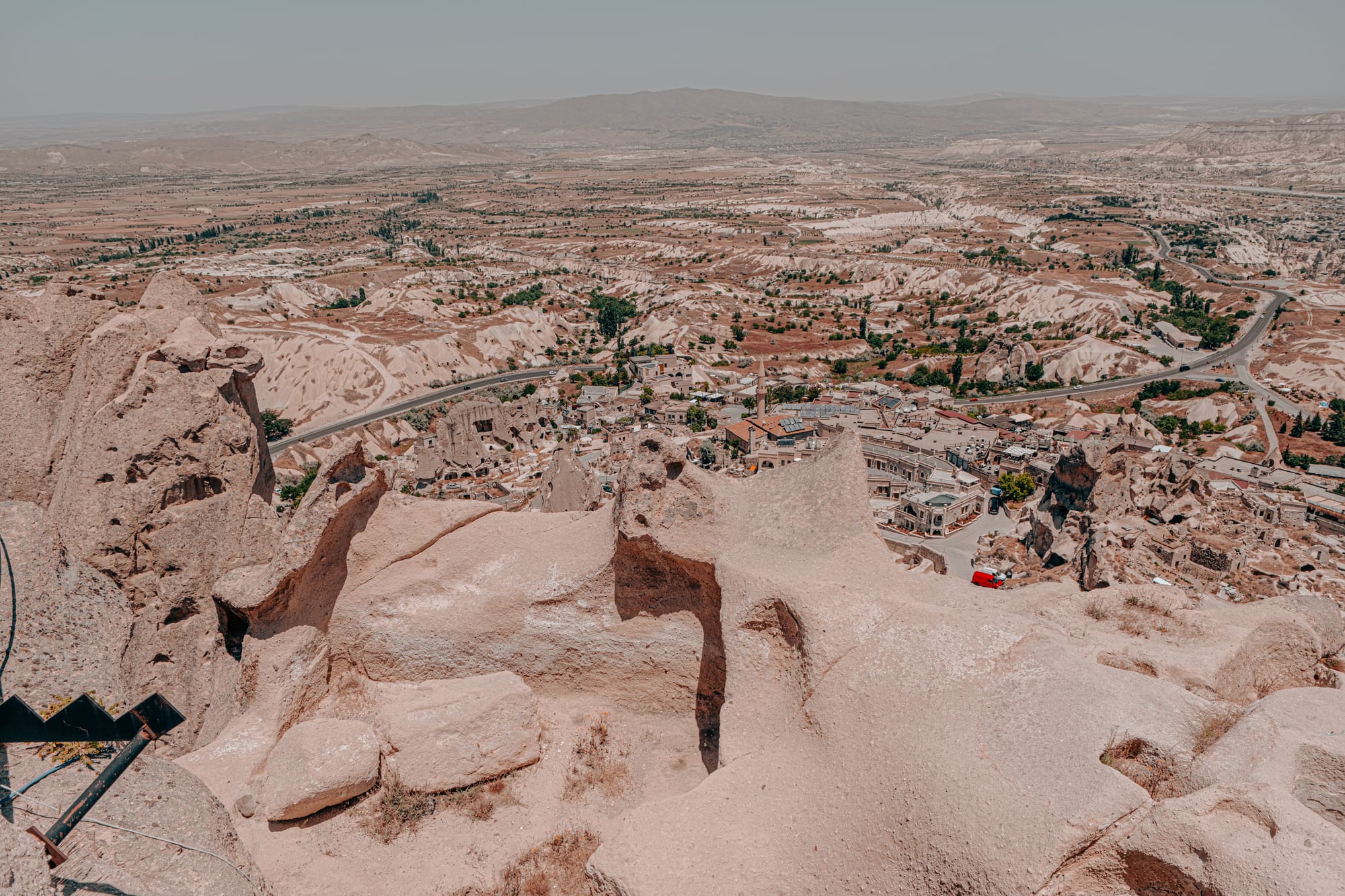
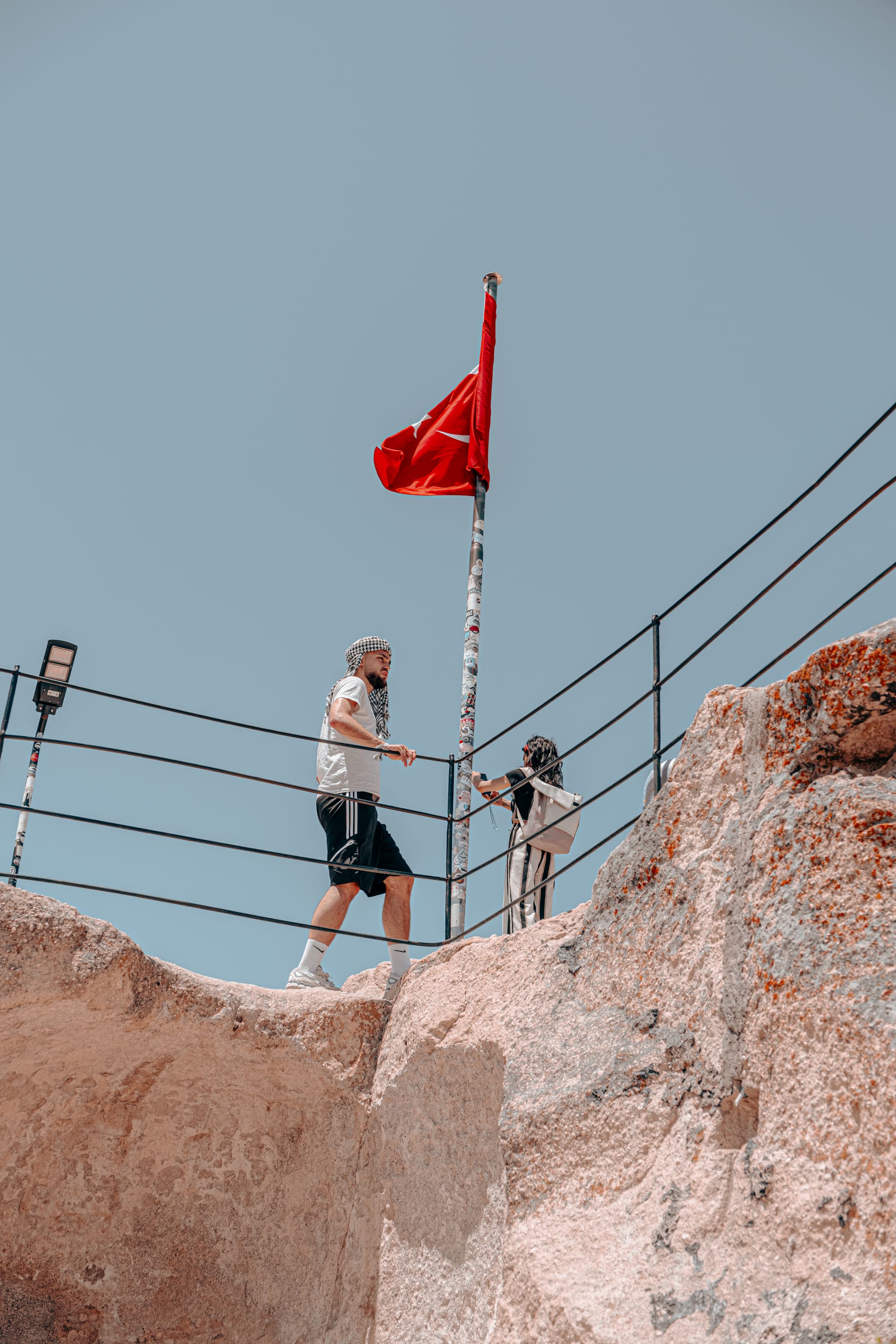
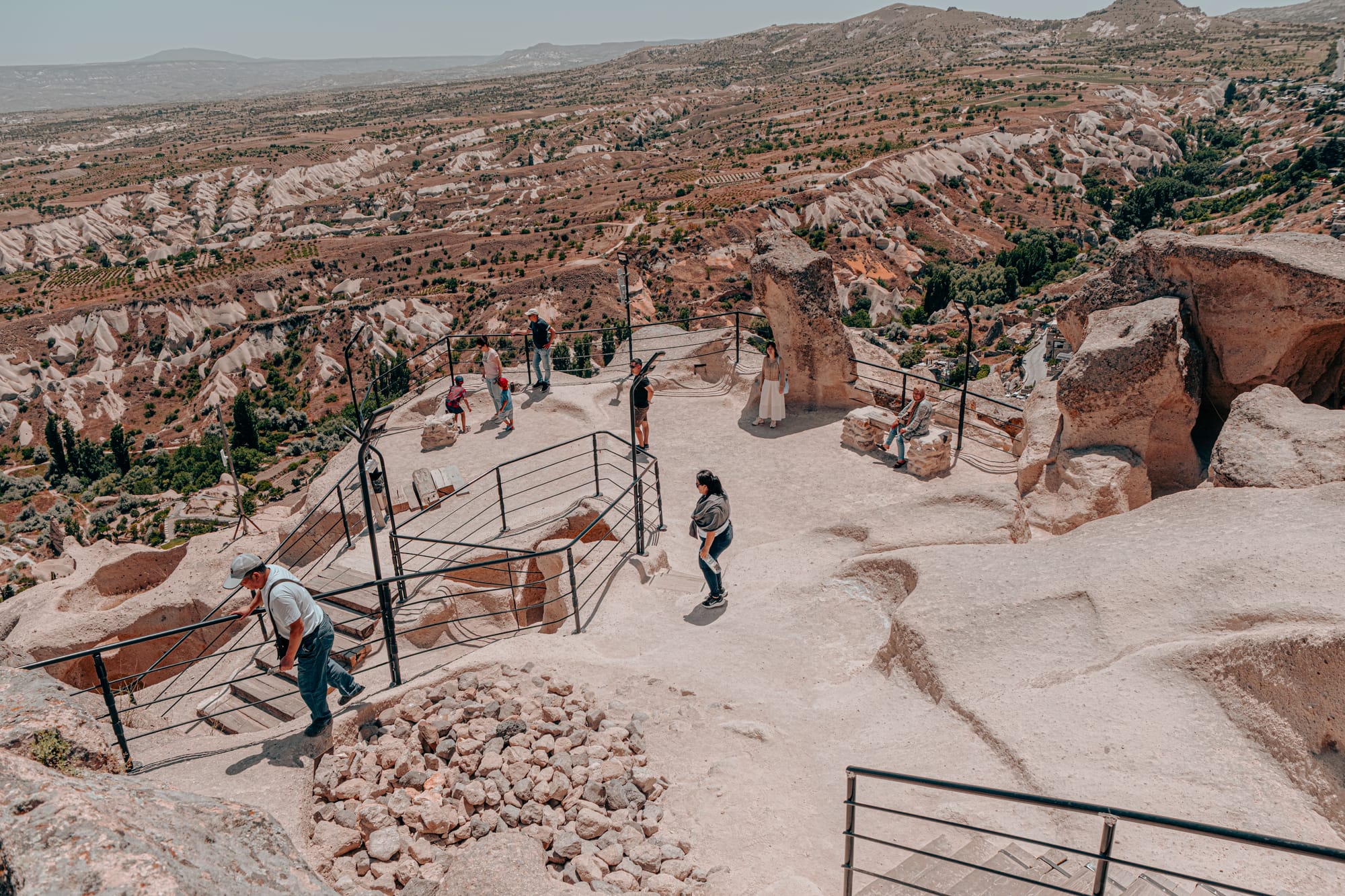
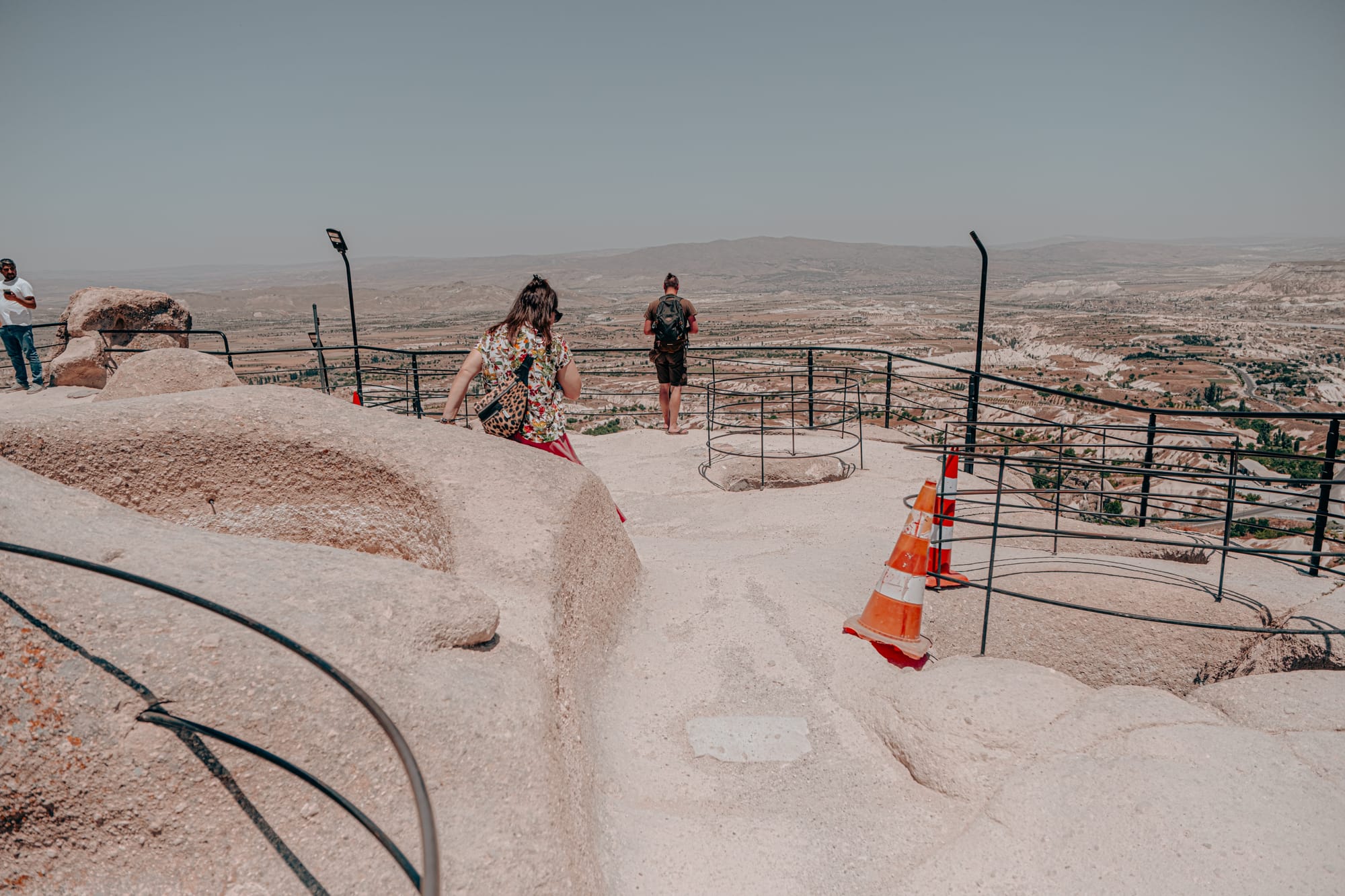
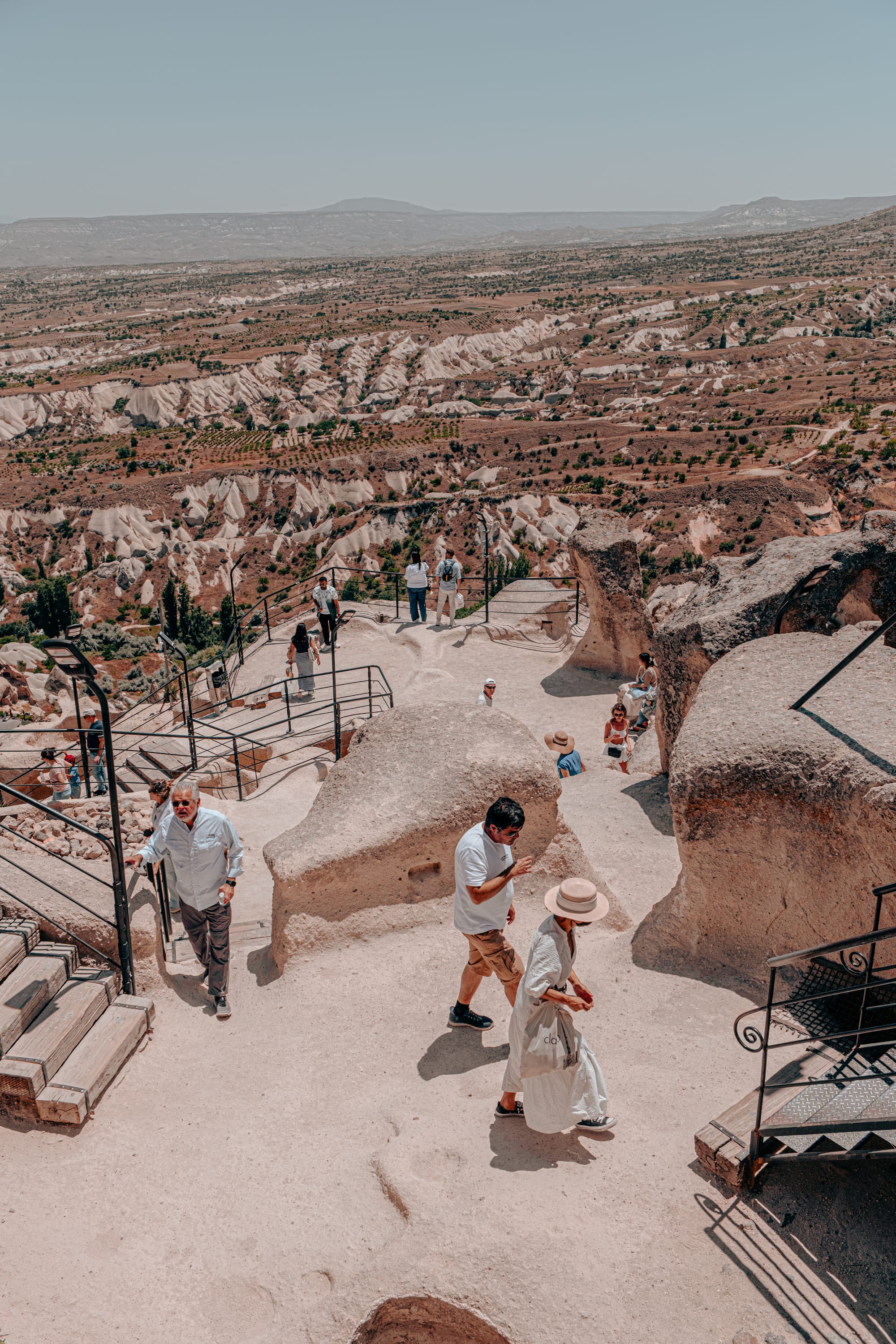
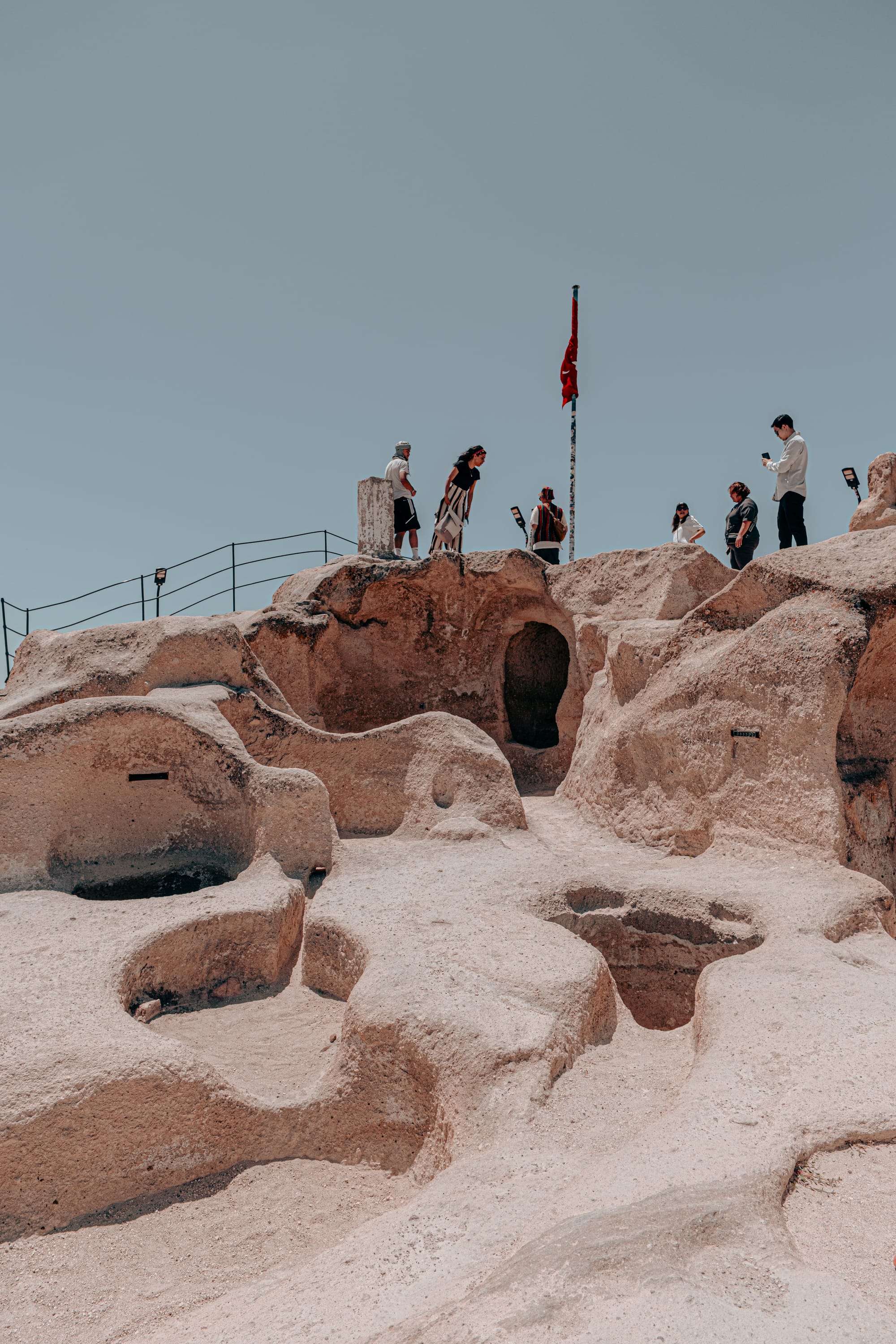
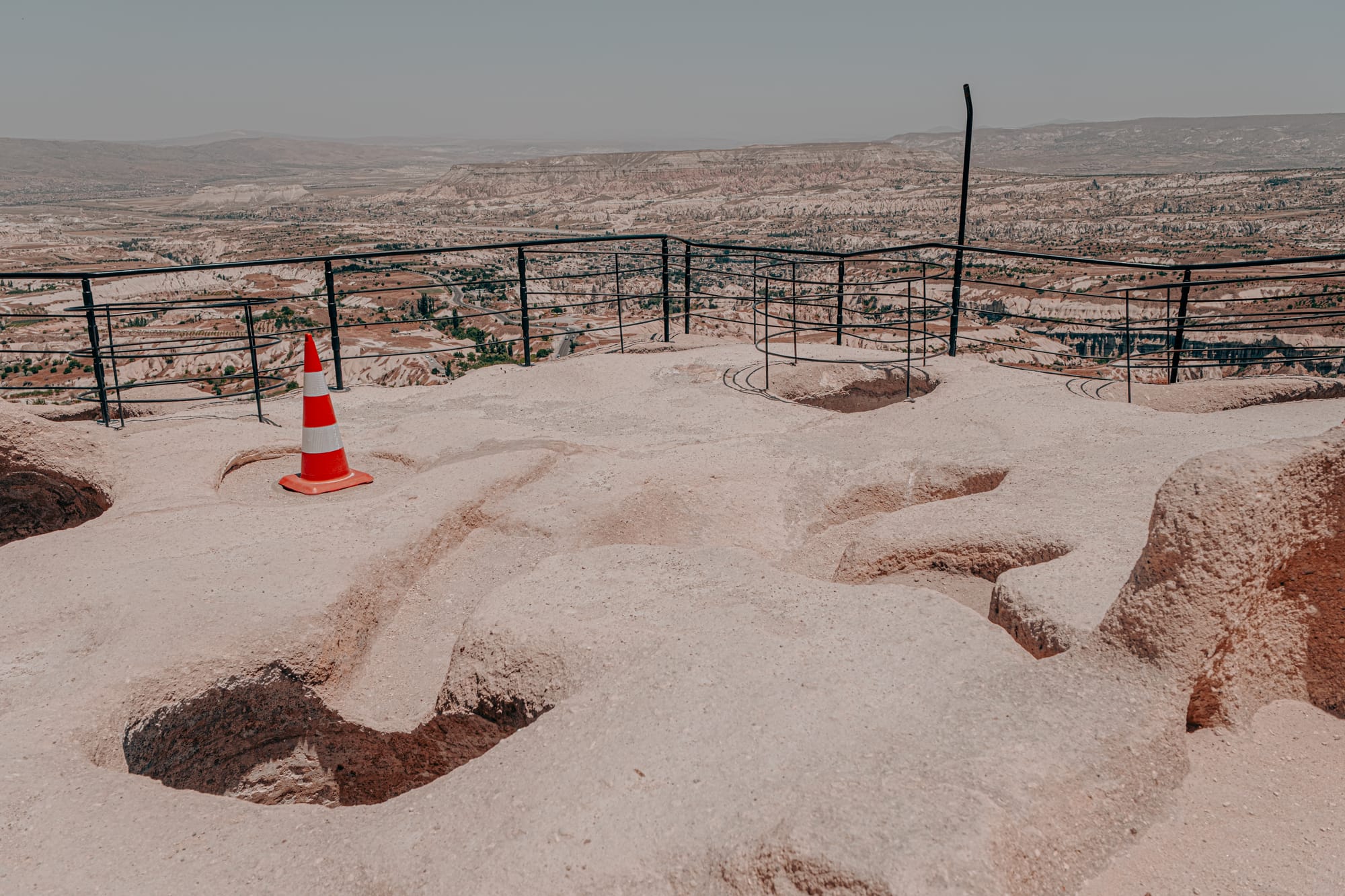
Visitors gather at the summit of Uçhisar Castle for sweeping views across Cappadocia
To the north and east, you can spot Ortahisar and Avanos. To the south, Nevşehir spreads across the plateau. Below, the town of Uçhisar sits tightly clustered around the base of the rock.
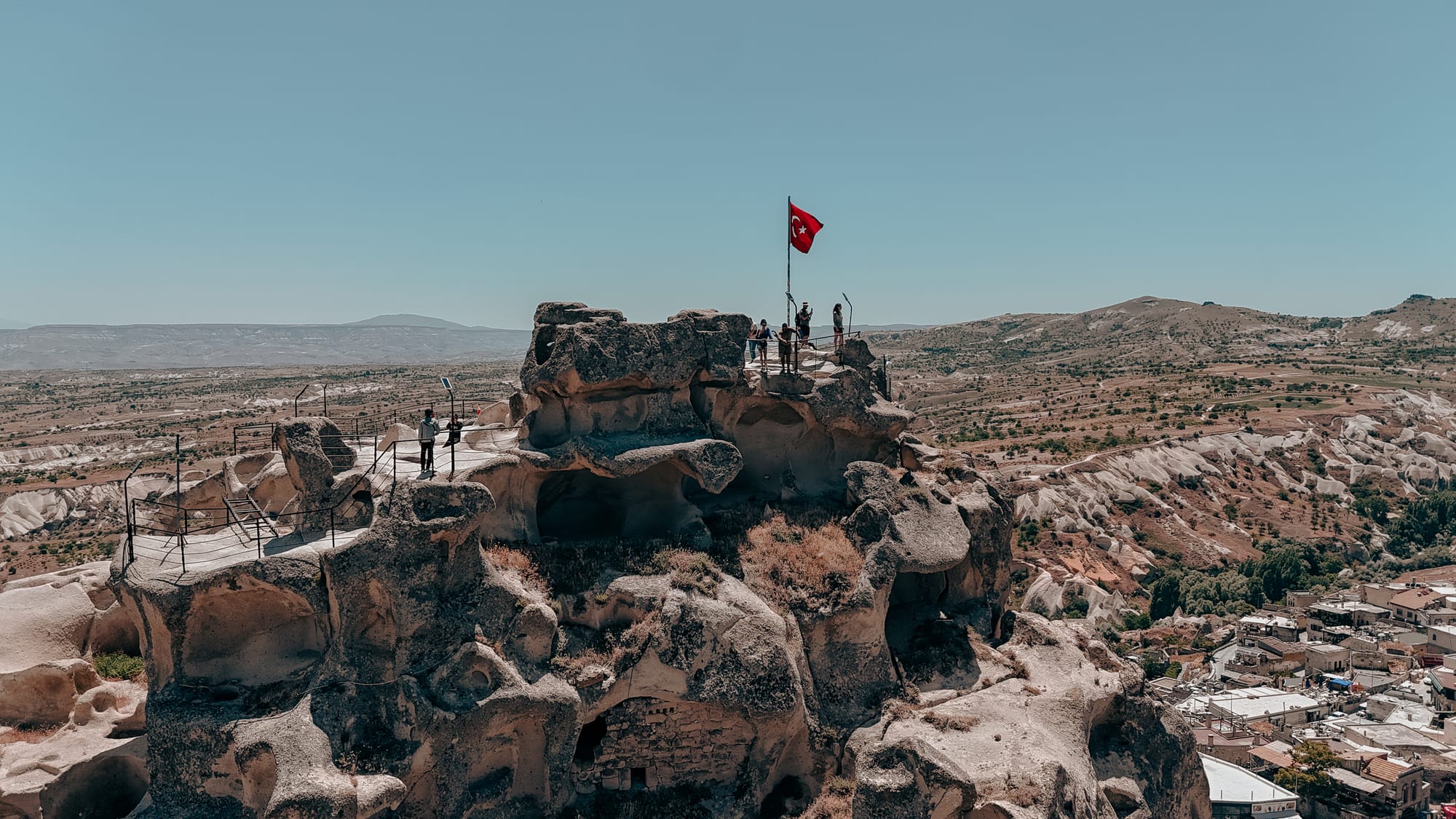
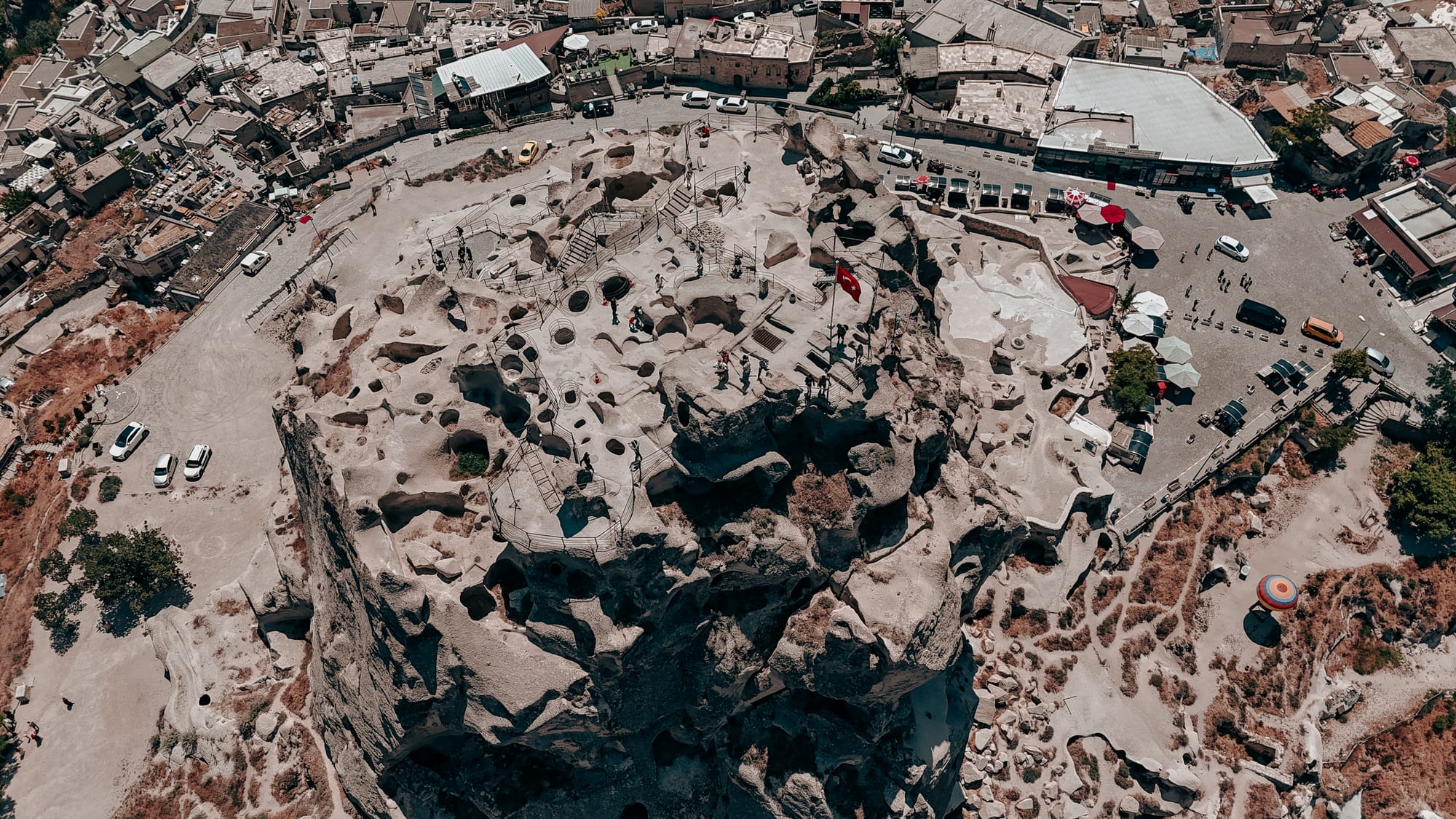
The height gives you a real sense of the geography of Cappadocia—the scale of the valleys, the spread of villages, and the surrounding volcanic mountains.
An unforgettable viewpoint
Climbing Uçhisar Castle combines history, scenery, and accessibility in one experience. It is easy to reach, inexpensive to enter, and delivers views that rival anything else in Cappadocia. The climb itself gives you a sense of how the castle was once used—as a refuge, a home, and a lookout. The summit gives you the best possible orientation to Cappadocia’s landscape.
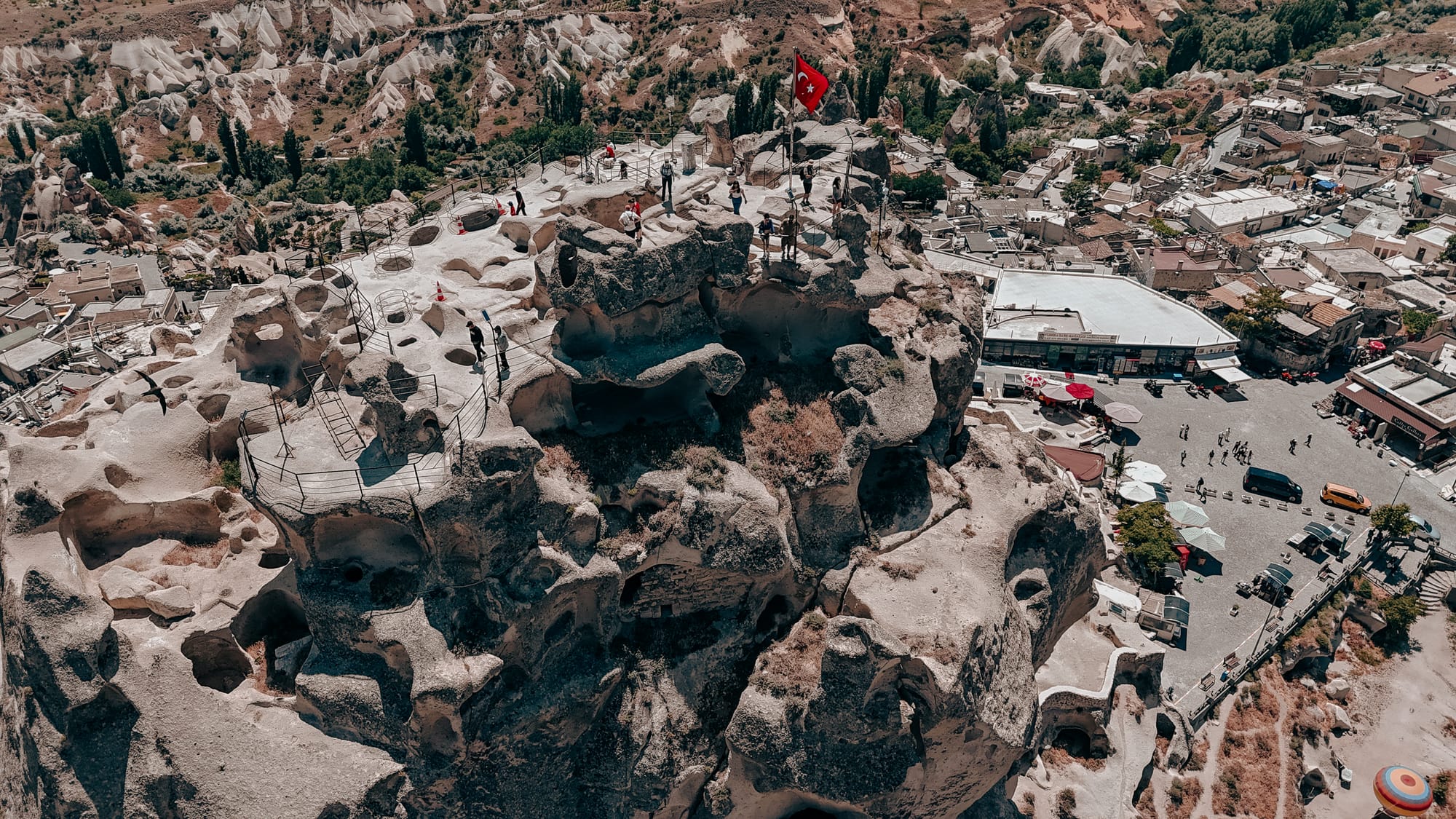
Uçhisar Castle combines history with natural beauty, offers a unique look into the region’s carved architecture, and provides one of the very best viewpoints in the area. For those staying nearby, it is a daily reminder of Cappadocia’s dramatic landscape, and for visitors, it is an unmissable stop.
Besides entering the castle itself, there are also some beautiful walking paths surrounding it. Read our full post on Uçhisar Castle's walking trails for more info.






